The VW Camper or as it was also known, the Type 2, was introduced in 1950. It took 72 years for its successor, the ID. Buzz to be brought to market. The vehicle’s name takes inspiration from the original ‘Volkswagen Bus’ and incorporates the automaker’s naming scheme for its all-electric line-up.
With no direct competition and a large fan base for the original model, the fully electric vehicle has stirred up a lot of buzz. Ignoring the pun, we’ll be looking to see if this EV is worth its asking price and if the hype that surrounds it is justified.
If you’d prefer to watch a review of the VW ID. Buzz, head on over to our YouTube channel.
VW ID. Buzz price & competition
At the time of writing and in the UK, the ID. Buzz is solely available in a rear-wheel drive (RWD) configuration, where its singular motor combines with a 77 kWh (82 kWh gross) battery to provide 150 kW (201 hp), 310 Nm of torque and a quoted range of 255 miles on the WLTP test cycle.
It’s also only offered in two trim levels, the Life at £58,915 and the Style at £63,715. A breakdown of the differences can be found below (click to expand):
While there’s no direct competitor, there are a plethora of all-electric SUVs to choose from: the MG4 EV from £26,995; the MG ZS EV from £30,495; the Citroen e-C4 from £31,995; the Hyundai Kona Electric from £32,450; the Kia Soul EV from £32,845; the Peugeot e-2008 from £35,900; the Vauxhall Mokka-e from £36,335; the Kia Niro EV from £36,795; the Volkswagen ID.4 from £38,845; the Skoda Enyaq iV from £38,970. You’ve also got the MG5 EV, the all-electric estate that starts from £30,995.
Find the best VW ID. Buzz deals
Closer to the ID. Buzz’s price tag you’ll find: the Tesla Model Y from £44,990; the Hyundai Ioniq 5 from £43,150; the Kia EV6 from £45,245; the Nissan Ariya from £46,145; the Volvo XC40 Recharge from £46,505; the Audi Q4 e-tron from £49,215; the Volkswagen ID.5 from £50,710; the Ford Mustang Mach-E from £50,830; the Mercedes EQA 250 from £52,010; the BMW iX3 from £64,165; the Jaguar I-Pace from £69,995; the Mercedes EQC from £74,330; and the Tesla Model X from over £102,980.
Read next: Volkswagen ID.4 review: Better than the VW ID.3?
VW ID. Buzz exterior review
Given the long and successful history of the original vehicle, it’s no surprise to see that Volkswagen has taken inspiration from its predecessor. Indeed, the ID. Buzz instils a bit of nostalgia with a modern twist, from its bubble-shaped frontal design, sleek side profile and elegant rear.
Despite the vehicle’s van-like size, it looks particularly dashing from the side thanks to the inclusion of 19″ alloys that come fitted as standard on the Life trim, and the larger pictured 20″ wheels on the Style. Even bigger 21″ alloys are available as a £515 option on the latter trim.
On that note, the ID. Buzz comes in a Mono Silver Metallic finish as standard. Should you want one of the other metallic finishes, it’ll cost you £1,035. A solid ‘Candy White’ colour it’ll cost £300. However, the eye-catching two-tone finishes, such as the pictured ‘Candy White/Bay Leaf Green’ colour, it’ll cost a whopping £2,790.
Another option you might want to consider, especially if you’re going camping, is the retractable tow bar with an electric release, which will cost you an additional £980. Speaking of which, the vehicle has a towing capacity of 1,000kg if you’ve got a 12% braked trailer or 750kg if it’s unbraked.
For those wondering about the vehicle’s roof load, it’s not been officially specified online, nor can it be found on the spec sheet or brochure. However, TotallyEV has received confirmation from the German automaker that it is possible to get accessory roof bars mounted onto the roof, with the vehicle having a load capacity of 95kg.
Read next: Volkswagen ID.5 review: Germany’s best electric SUV?
VW ID. Buzz interior review
Moving inside, the ID. Buzz is near-identical to its siblings, the ID.5, ID.4 and ID.3. While we don’t have any inherent issues with the choice of materials, it’s hard to ignore its design, which remains largely unchanged from a vehicle that costs almost half its price. Indeed, if we are to compare the ID. Buzz to vehicles of its price tag, such as the Mercedes EQA, BMW iX3 and Jaguar I-Pace, it doesn’t stand a chance when it comes to the overall look and feel of the cabin.
Aside from the lack of imagination from the Volkswagen Group, it’s unsurprising yet disappointing to see the use of nonsensical capacitative buttons and non-backlit touch sliders at the front of the cabin; it’s a guessing game as to what you’re adjusting when driving in the dark. It’s a theme that the automaker has adopted with all of its modern vehicles and we’re opposed to this decision. Especially with the use of haptic buttons on the steering wheel, which can be accidentally initiated when cornering at speed; this can lead to some rather frustrating experiences.
Similarly, the manufacturer has retained the integrated pressure sensor within the driver’s seat. When the main occupant is sat down, the vehicle will power on whereby pressing down on the foot brake will trigger the vehicle’s ignition.
This might seem intuitive for those stepping in and out of the vehicle as a solo occupant, but should you have another individual within the cabin who chooses to stay put, the vehicle will power down. Leaving anyone sitting inside without any climate controls or entertainment. Even if the key fob is left inside, an occupant will have to reach over to the on/off capacitative button at the centre of the dashboard or press the physical start/stop button found on the right-hand side of the steering column – not ideal if you have teenagers sitting at the back. We wish the manufacturer had integrated an option to disable this behaviour.
On the subject of interactions, the gear selector, which is similar albeit a little different to the one found in the ID.5, ID.4 and ID.3 resides next to the instrument cluster. It’ll take a little while to get used to, but once you get the hang of it, flicking to reverse or drive/B-mode becomes second nature. Pressing the button located at the side puts the car into Park.
This brings us to the use of technology within the cabin. At the centre of the dashboard, you’ll find a 10″ display (or 12″ if you opt for the £1,560 Infotainment Package Plus option). The screen is fluid and has an intuitively laid-out menu system. However, we did encounter a few technical glitches where the screen became unresponsive. This seemed to occur more frequently when using Android Auto wirelessly. Much like Apple CarPlay, the third-party mobile operating system is supported both over a wired and wireless connection.
On that note, navigation data from these systems is fed through to the customisable 5.3″ instrument cluster, which will also display all your key driving information and make it easy to see the safety systems that are in operation. Unfortunately and rather disappointingly, a Head-Up Display (HUD), isn’t standard or available as an option. Given we’ve seen it on other vehicles within the ID. family, one might have expected it to come across as one of the more premium offerings from the manufacturer. Alas, at the time of writing and in the UK, that’s not the case.
Equally, it’s surprising to see that there’s only a nine-speaker setup present with no means of upgrading. You’ll find five speakers at the front and four at the rear. If you’d like to hear how it sounds, watch our detailed review of the system on YouTube. We should note, however, that there are a few empty speaker grills throughout the cabin – from the small openings found within the front doors and boot to the omission of a subwoofer at the rear. Given there are missing audio drivers, one can only imagine an upgrade (be it via an option or an additional trim) will be made available at a later date.
Read next: Kia EV6 review: The Hyundai Ioniq 5 alternative
VW ID. Buzz storage review
Now while we have our complaints about the vehicle’s interior design and the lacklustre integration of technology, the vehicle’s storage capacity is class-leading. Within the cabin, at the front, you’ll find extremely large door bins, a glove compartment with a non-slip area found just above it, a small bay by the driver’s side for your key fob and a wireless phone charger with two USB Type-C ports that can be used to connect up to the infotainment system. There’s another Type-C port found by the passenger’s door, which is solely used for charging.
Towards the centre of the dashboard, you’ll find two retractable cupholders and as for the centre console or as Volkswagen puts it, the Buzz Box, has a customisable area at the top, where one of the sliders even doubles up as an ice scraper, while at the front of the unit, you’ll find a pull-out tray that reveals a large storage bay and at the rear a smaller area for rear occupants. As if that wasn’t enough, the centre console itself can be completely removed in its entirety, which is a novelty and allows for a degree of customisation within the cabin.
At the back, you’ll find larger-than-normal door bins, with each of the rear doors also integrating a USB Type-C port for charging. Note, the manufacturer claims there are four Type-C ports at the rear of the cabin, but we failed to locate two of them. What is easy to spot, however, are tray tables found at the back of the front seats. These can be useful for your rear occupants but due to their lightweight plastic nature do feel flimsy. There’s also no pull-down armrest compartment, which means the rear outer occupants can’t benefit from an armrest nor will they have easily-accessible cupholders.
While there’s ample space within the cabin, there’s even more space in the boot. The ID. Buzz has a whopping 1,121 litres with the seats in place and 2,123 litres with them folded down. That’s by far the biggest boot capacity we’ve ever seen in an all-electric vehicle: Tesla Model Y (854/2,100 litres); Audi e-tron (660/1,725 litres); Skoda Enyaq iV (585/1,710 litres); VW ID.4 (543/1,575 litres); VW ID.5 (549/1,561 litres); Hyundai Ioniq 5 (520/1,587 litres); BMW iX3 (520/1,560 litres); Jaguar I-Pace (656/1,453 litres); Audi Q4 e-tron (520/1,490 litres); MG5 EV estate (479/1,367 litres); Kia Niro EV (475/1,392 litres); Peugeot e-2008 (434/1,467 litres); MG ZS EV (448/1,375 litres); Kia EV6 (490/1,300 litres); Volvo XC40 Recharge Twin (452/1,328 litres); Ford Mustang Mach-E (402/1,420 litres); Kia Soul EV (315/1,339 litres); Citroen e-C4 (380/1,250 litres); Mercedes EQA (340/1,320 litres).
In terms of convenience, the Life trim doesn’t have an electric tailgate, but it can be added for an additional £225. The Style trim, however, does have it fitted as standard. When opened, the tailgate has a hatchback design, making it ideal for camping but isn’t great if you’re parked up next to a charge point as it has a wide opening. Thankfully, it is still easy to close thanks to the accessible boot close button or by pulling down on the integrated handle.
Elsewhere, the rear split-folding seats have a 60:40 design with no integrated ski latch. A non-issue given the sheer size of the boot. Equally, the removable and retractable boot load cover can be stored just behind the rear seats. There’s also no underfloor compartment nor frunk storage space (compartment under the bonnet) to store your charging cables, but yet again thanks to the amount of space there is within the cabin and boot, this shouldn’t be a cause for concern.
However, what will be of importance to certain individuals is the lack of a flat loading bay in the Life trim. Without adding the £675 option for the Multi-Flex Boards, you’ll find a notable step between the floor and the rear portion of the back seats. This means that anyone who intends to place a mattress inside the VW ID. Buzz will need to splash out more money or opt for the more expensive Style trim. Given the vehicle’s history and popularity with campers, it’s rather disappointing that a flat loading bay isn’t standard on both trim levels.
It’s also worth pointing out that the removal and installation of the Multi-Flex Boards aren’t straightforward, with the boards themselves understandably being heavy due to their purpose of supporting a person’s weight.
Nonetheless, should you want to opt for the extra or are looking at the more expensive trim level, the boot will easily accommodate a double mattress making it ideal to camp in. There’s a 12V socket at the rear to provide extra charge and a few cut-outs to place your valuables too.
Read next: Skoda Enyaq iV review: The Volkswagen ID.4 alternative
VW ID. Buzz comfort review
Another aspect that might come as a surprise given the vehicle’s purpose and unique position within the market is the lack of seven seats. Indeed, at the time of writing and in the UK, the ID. Buzz is solely available as a five-seater, which to us is quite surprising. Volkswagen is surely missing a trick, as there are a finite number of EVs that can accommodate larger families. Given the space at the back, the fully electric microbus could have easily accommodated two extra individuals – even if it were an option, we suspect it could have added to the overall appeal of the vehicle. We understand this might come at a later date but as of yet, we’ve not received any further information from the automaker.
Another consideration is that the seats themselves do get oddly hot, and that’s without the seat warmers toggled on. In our tested model, we had the Miwo cloth upholstery, which led to a somewhat toasty experience on longer drives. Given we’re based in the UK, with climates not exactly hitting extremely high temperatures, it was quite surprising, to say the least.
Aside from that, the seats are accommodating and comfortable. There’s also exceptional legroom and headroom both at the front and rear of the cabin. We’d go as far as saying that 7ft (213cm) individuals won’t feel henned in, which puts the ID. Buzz in a class of its own. Better still, the rear seats can be adjusted, be it in terms of going back and forth, or by reclining to a certain degree. There’s also a flat footwell design both at the front and rear of the cabin, allowing all occupants to feel comfortable while sat inside the vehicle.
Find the best VW ID. Buzz deals
The front seats are both heated, with the windscreen, rear window and steering wheel also having heating functionalities as standard. There are also two armrests present on the Style trim, which does make for a pleasurable experience on motorway cruises. The seats are manually adjustable, however, with electric controls with a memory function coming between £3,150-£3,360 in the Life trim and £2,305 in the Style trim. A preposterous figure given the already-steep asking price of the vehicle. The ‘Comfort Seat Package’ does also add electronically-operated sliding doors, which is otherwise an option in the Style trim only for £1,055 as part of the ‘Open & Close Package Plus’ option.
We suspect many won’t opt for either of these options due to the added cost. Especially given the manually-operated sliding doors are a breeze to operate. Speaking of your options, it’s surprising not to see a panoramic glass roof or a sunroof offered as part of a package. For those who aren’t looking to mount anything on the roof, it might have added to the overall appeal of the vehicle as one could have gazed into the stars, especially when sleeping within the vehicle.
Another important factor when it comes to comfort is the driving experience. Here, cabin noise is kept down to a minimum with the ID. Buzz doing a good job of suppressing environmental noises. However, it is worth pointing out that while traversing rougher terrain, you will hear a bit of low-end resonance within the cabin. It’s not overly distracting nor does overly hinder one’s driving experience, but it’s something we’ve only experienced in cheaper vehicles, such as the MG ZS EV.
Read next: Jaguar I-Pace review: Better than newer rivals?
VW ID. Buzz performance review
What also constitutes in having a good driving experience is the vehicle’s suspension system, which in our opinion has been tuned to perfection. It’s soft and provides a comfortable feel on both the motorway and inner-city commutes. Indeed, the vehicle’s setup soaks up anomalies, speed bumps and potholes with ease, all while not suffering from a jittery drive.
Undoubtedly, this does hinder the vehicle’s performance on windy country roads. Body roll is present and with a lack of a one-to-one driver’s feel, you won’t feel connected with the front axle. That’s not to say it’s uninspiring to drive, far from it. Much like its ID. siblings, the Buzz operates on a rear-wheel drive (RWD) configuration providing a fun experience when thrown around corners. We suspect this aspect will take many by surprise and will leave consumers with a sense of joy.
One could also complement its raw straight-line performance. From a standstill to 60mph, we had it tested at 9.3 seconds using Racelogic’s Vbox Sport; not bad for a vehicle that has an unladen weight of 2,503kg. This is thanks to a rear-mounted motor that combines with the vehicle’s 77 kWh (82 kWh net) battery pack to provide 150 kW (201 hp) of power and 310 Nm of torque. Top speed is rated at 90mph, which might come as a disappointment to those who frequent unrestricted roads.
Buy a car phone mount on Amazon (Affiliate)
While that’s all very impressive, the most important factor is its electric range. The ID. Buzz is currently only available with a 77 kWh (82 kWh net) battery pack, which on paper should provide 255 miles of range on the WLPT test cycle. From our own mixed driving tests, we netted 210-230 miles (or 180-200 miles while frequenting the motorway).
To us, its real-world range is disappointing, as those going camping will want a vehicle that can go the distance. Given the sheer size of the ID. Buzz, one might have expected Volkswagen to implement a larger 90 kWh+ battery pack than what it currently offers in its larger-sized SUVs. Equally, it’s surprising that it doesn’t come with a heat pump fitted as standard, nor is it available as an option, at least not at the time of writing and in the UK. A heat pump helps with efficiency as it draws in dissipated heat from the battery pack and safely feeds it into the cabin to provide warmth to passengers.
To put things into perspective, and to highlight how disappointed we are with the vehicle’s range, here are a few vehicles that we’ve reviewed and their tested figures: the VW ID.5 with a heat pump at 325 miles; the Skoda Enyaq iV 80 at 300 miles; the Tesla Model Y Long Range at 260-280 miles; the Audi Q4 40 e-tron, Hyundai Kona Electric and heat pump-less VW ID.4 all of which achieve 260 miles; the Kia EV6 RWD at 240-260 miles; the AWD Hyundai Ioniq 5 and Jaguar I-Pace, the MG4 EV Long Range and MG ZS EV Long Range at 230-250 miles; the BMW iX3 and Ford Mustang Mach-E at 230-240 miles; the Mercedes EQA at 210-220 miles; the Kia Soul EV at 205-225 miles; and the Citroen e-C4 at 180-200 miles.
Just to add salt to the wound, the Volkswagen Group’s smaller hatchbacks, the ID.3 and Cupra Born, which were tested with a 58 kWh battery pack, netted 230 miles and 210-220 miles, respectively. Frankly, we expected better electric range, a bigger battery pack and a heat pump to be included as standard in a vehicle that costs north of £59K.
Similarly, it’s rather disheartening that there’s only one regenerative braking mode to select from. B-Mode, which has to be initiated each time when powering on the vehicle, and enabled by rotating the gear selector, only offers 0.25g of deceleration, cannot be customised and doesn’t allow for a one-pedal driving approach as you’d find on some of its competitors.
To recharge the vehicle rapidly, Volkswagen has integrated a 170 kW input via the CCS charging port. This will take you to 80% charge from 5% in 30 minutes. Opt for a 7.2 kW input via the Type 2 port and it’ll take 12 hours from 0-100% – if you have access to a 3-phase 11 kW power supply, the onboard charger will allow you to attain this level of charge in 7hrs 30mins instead. A 3-pin plug will take a whopping 40 hours.
It is worth pointing out that when the charging flap is open, it won’t obstruct the sliding door. Volkswagen has cleverly angled the opening to ensure that passengers can frequent the rear of the cabin without disturbing the charging process.
There is also bi-directional charging, which we saw implemented for the first time in the VW ID.5. Here, the German automaker has allowed reverse power transfer, allowing you to feed energy from your vehicle’s battery pack into a home power wall via its CCS port; a rarity for the connector type.
At a later date, it’s said that the ID. Buzz will be able to feed energy back into the grid, allowing you to effectively make money by getting paid by the grid. It’s a means of futureproofing the vehicle, and we’re all for it but much like its sibling didn’t have the means of testing it, as an adapter wasn’t provided. Aside from this, for an additional £410, one can also add a 230 Volt outlet on the front passenger seat cushion frame – useful if you’re going camping.
Read next: Tesla Model Y review: Best electric SUV?
VW ID. Buzz safety review
As for safety, the ID. Buzz scored 5/5 stars in Euro NCAP’s crash tests, which is rather impressive due to its small crumple zone. Safety for Adult Occupants sits at 92%, Child Occupants 87% and it also managed an impressive 90% in the Safety Assist tests.
On the subject of driver assistance systems, the ID. Buzz integrates an LED strip on the dashboard that helps notify you of any imminent danger. Here, if you fail to stop on time, ‘City Emergency Braking’ and ‘Front Assist’ will kick in to illuminate a red light through said LEDs. The ‘Driver Alert’ system also has fatigue detection, which gives you slight peace of mind.
Adaptive Cruise Control (ACC) with Stop & Go technology also helps take the strain off mundane motorway drives and does a great job of maintaining a safe distance from the vehicle in front of you. However, we did find that it would sometimes pick up slip road signs and unnecessarily decelerate the vehicle. Not what you or the driver behind you want to experience when driving at 70mph.
Elsewhere, we weren’t too impressed by ‘Lane Assist’, which much like its ID. siblings, it feels primitive. It’ll only give you a gentle reminder if you’re going off-piste and won’t provide full steering support. Given the price its price, one might expect a more advanced system to be in operation.
A further annoyance is that the assistance system is enabled by default each time you turn on the vehicle. Given there are no physical buttons on the dashboard, you’ll have to navigate through the infotainment system each time you step foot inside the vehicle – it’s extremely cumbersome for those who don’t want or require lane assist to be in operation at all times.
When it comes to parking, the ID. Buzz comes with front and rear sensors, and a rearview camera. Much-needed as rearview visibility can be hard to judge given the vehicle’s 4,712mm length. Should you want to better the experience, you might want to opt for ‘Area View’, which is only available in the ‘Assistance Package Plus’ package that comes in at a whopping £1,425 – this also adds a blind-spot monitoring system (Lane change system Side Assist) among a few extra safety features.
Aside from all of the above, the ID. Buzz is easy to manoeuvre, has excellent visibility at the front and side, and has an 11.1-metre turning circle, which is pretty impressive for a vehicle that has a wheelbase of 2,989mm.
Read next: BMW iX3 review: The best driver’s feel?
TotallyEV’s verdict on the Volkswagen ID. Buzz
While there’s a lot to love about the ID. Buzz’s exterior design, boot capacity and its fun-to-drive RWD configuration, it’s hard to ignore some of the drawbacks. It has a limited range with no heat pump fitted as standard, it’s not available as a seven-seater, the entry-level Life trim cannot have a mattress fitted inside unless you spend extra on an option, the quality of the materials within the cabin are sub-par for a vehicle at this price point, technology within the cabin hasn’t been fully optimised and to top it off, it’s expensive.
Find the best VW ID. Buzz deals
Ultimately, the ID. Buzz is unique and offers class-leading storage space in an EV. However, if you’re not sold on its exterior design or need an enormous boot, you should consider some of the alternatives, such as: the VW ID.5, the VW ID.4, the Skoda Enyaq iV 80, the Tesla Model Y, the Kia Soul EV, the Kia EV6, the Hyundai Ioniq 5, the Jaguar I-Pace, and the BMW iX3.
Would you pick the VW ID. Buzz over rival alternatives? Let us know in the comments section below or via social media; we’re on: YouTube, Instagram, Facebook, Twitter and LinkedIn.

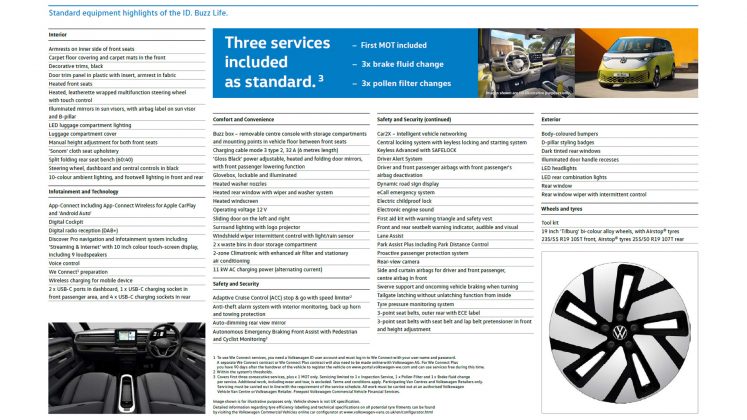
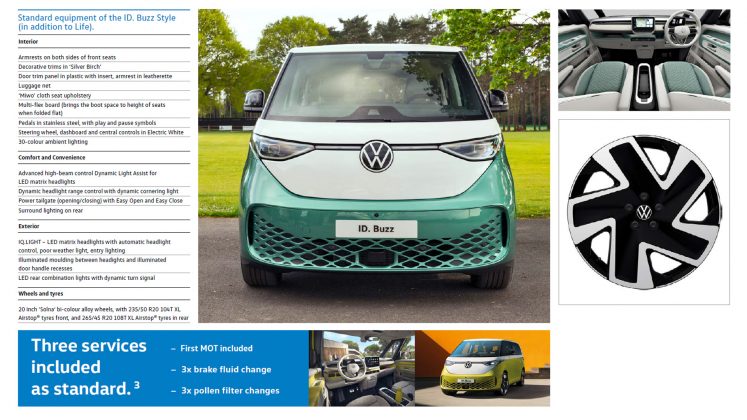
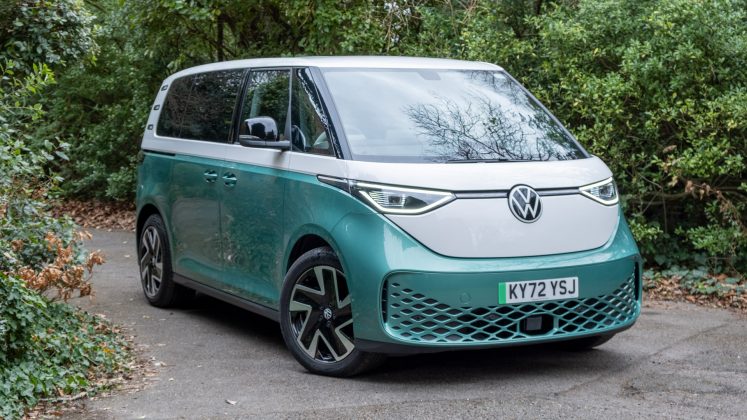
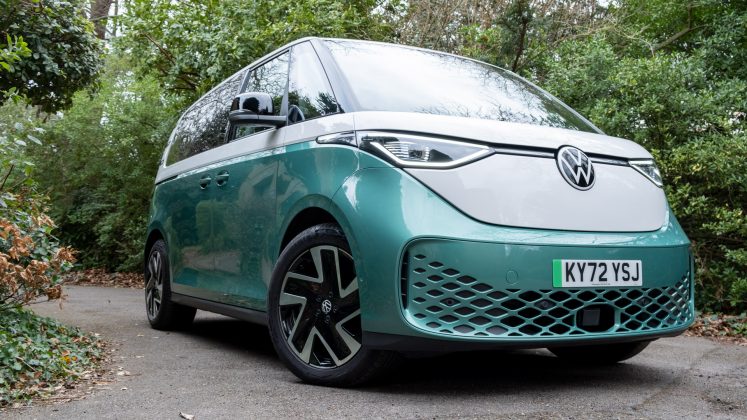
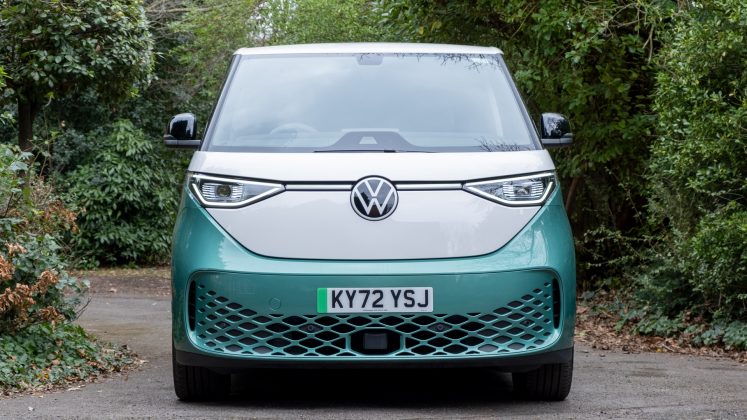
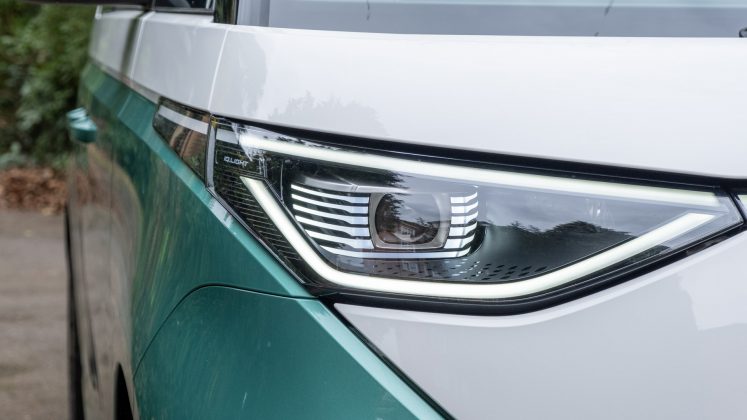
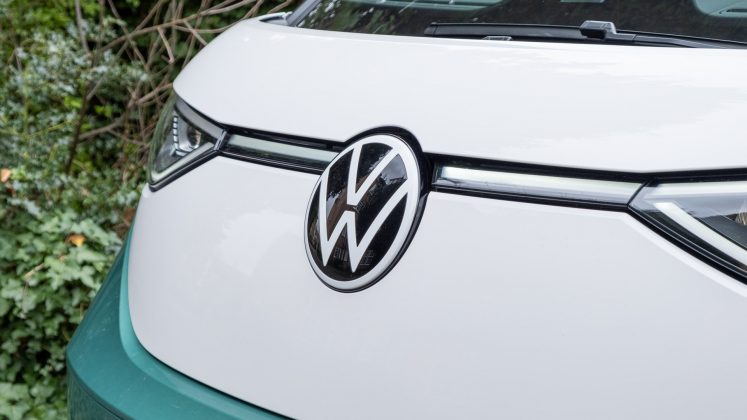
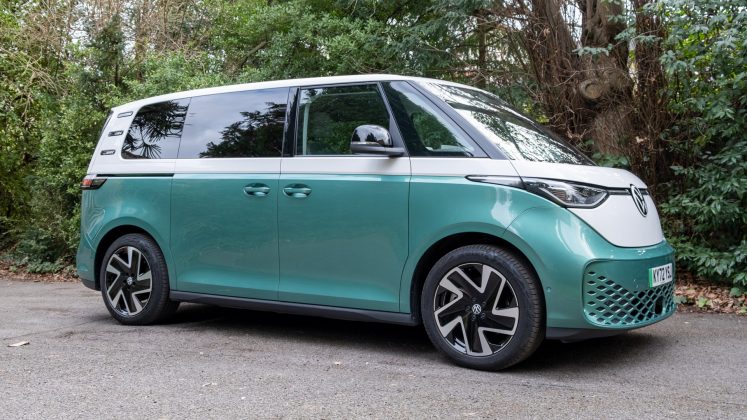
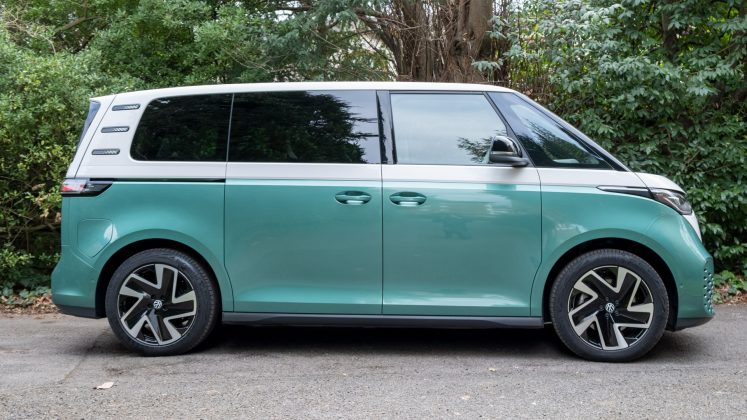
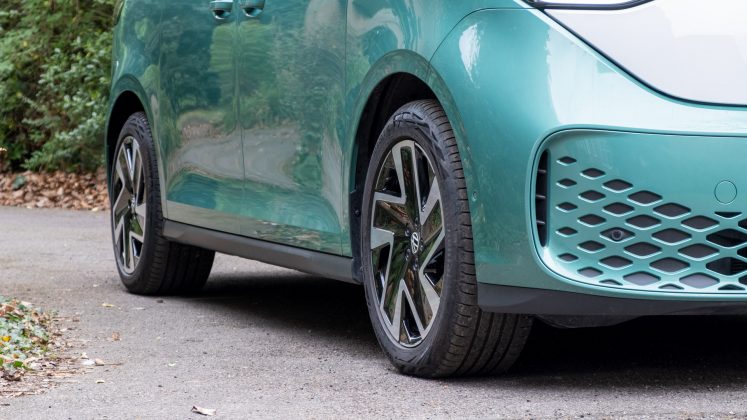
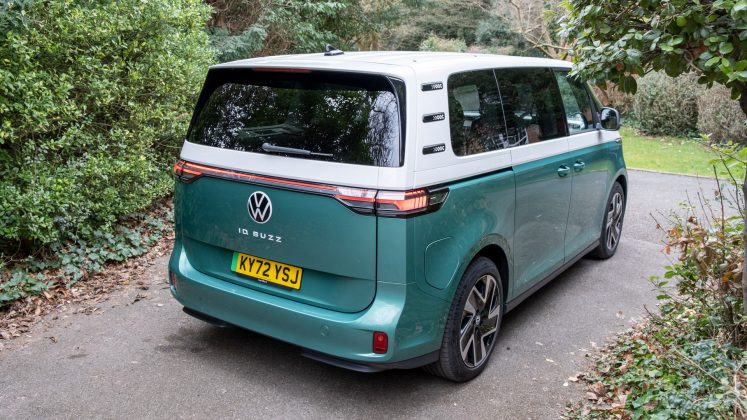
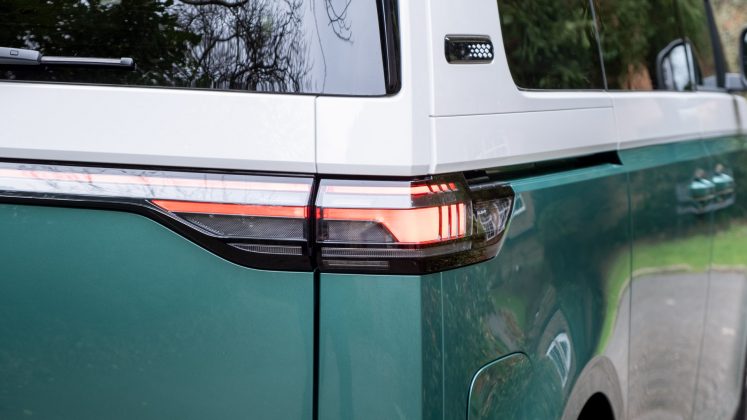
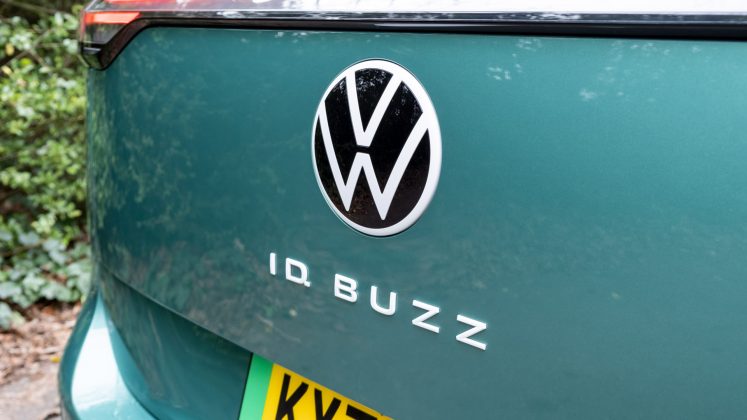
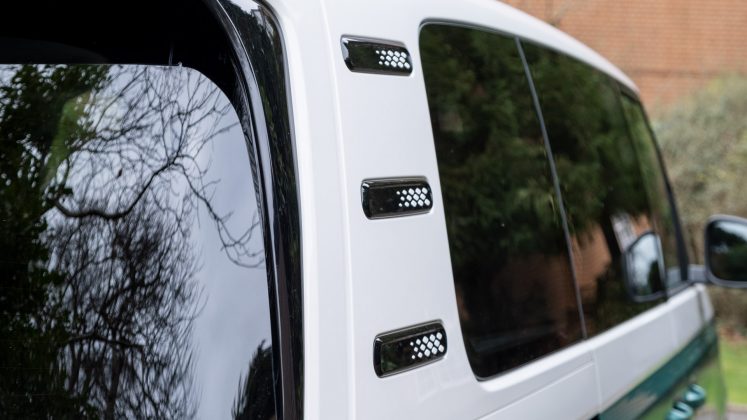
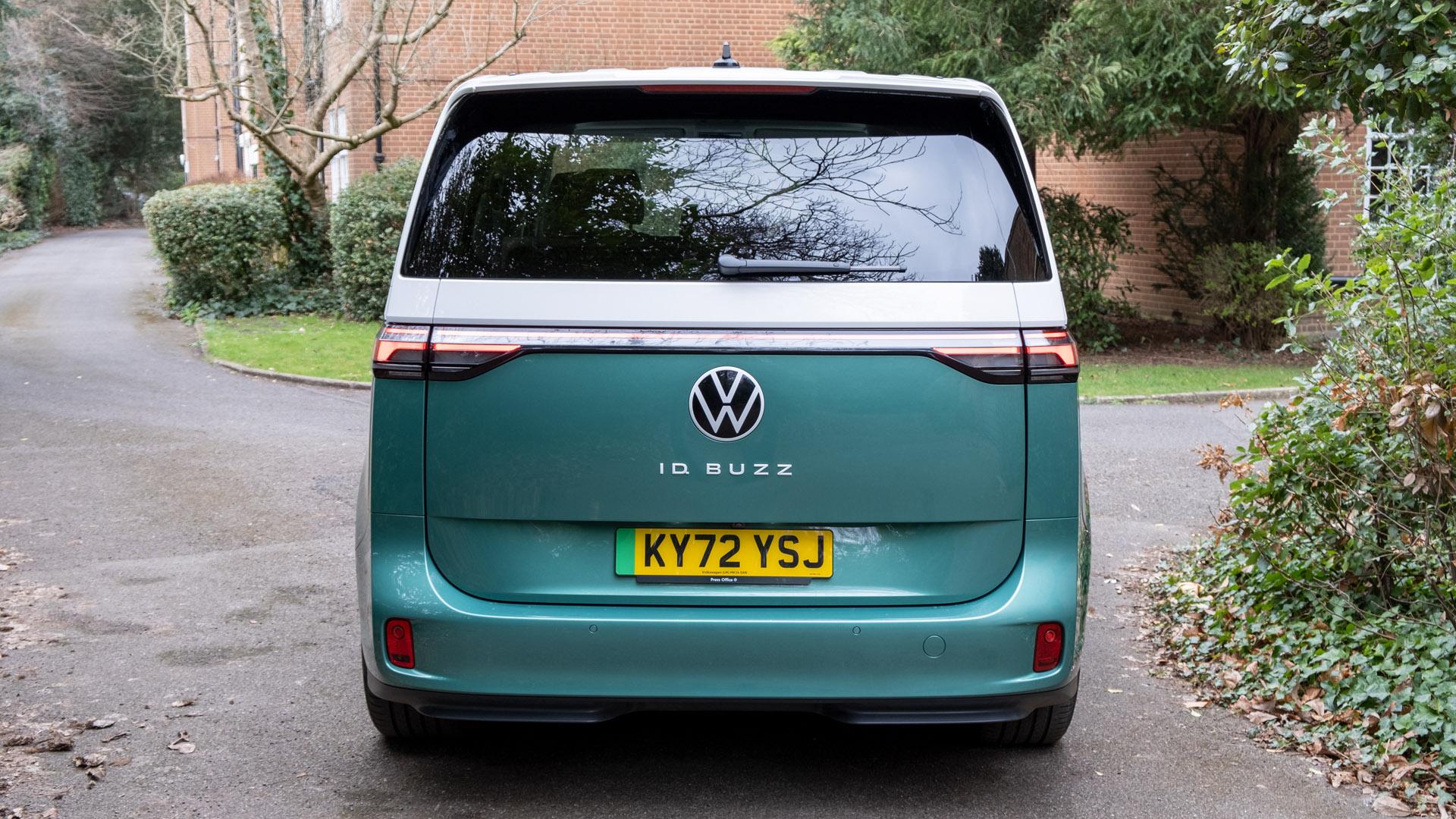
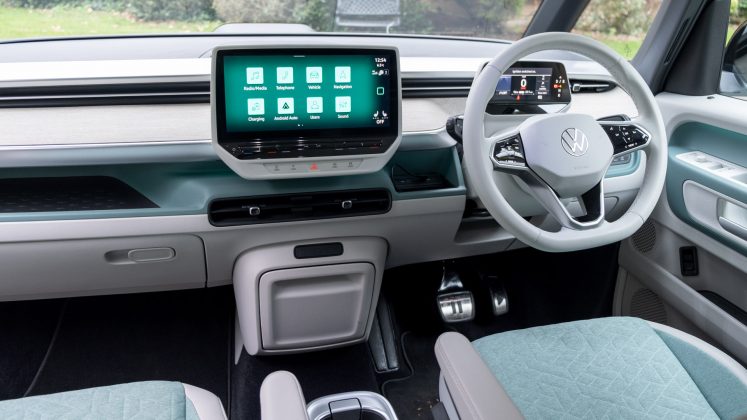
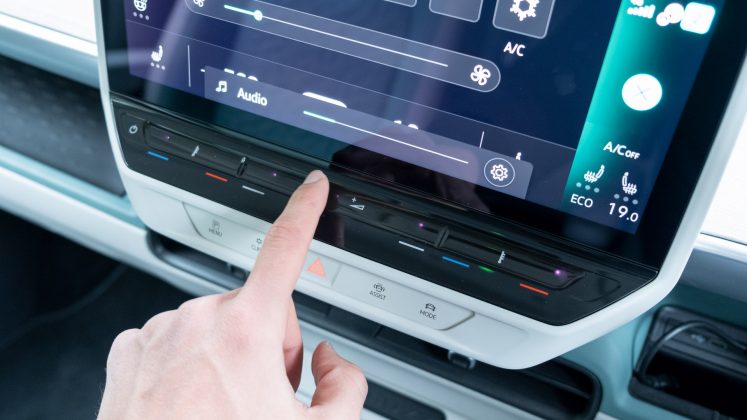
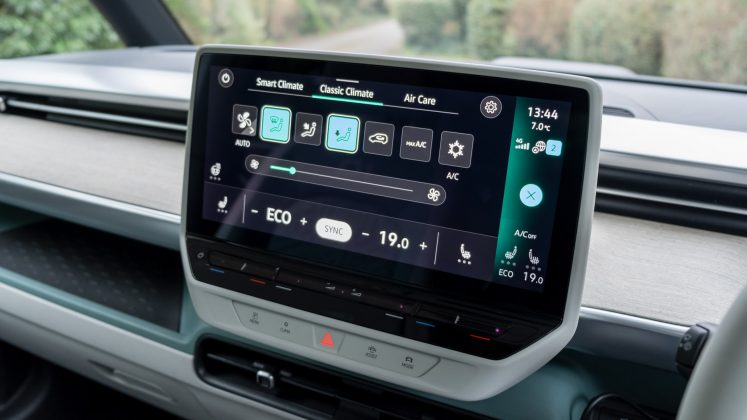
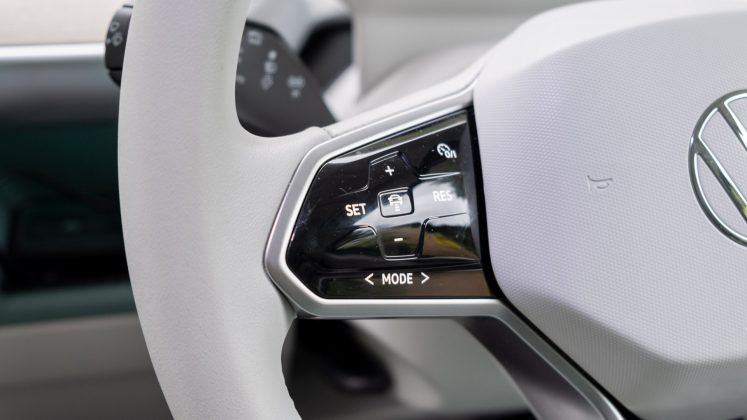
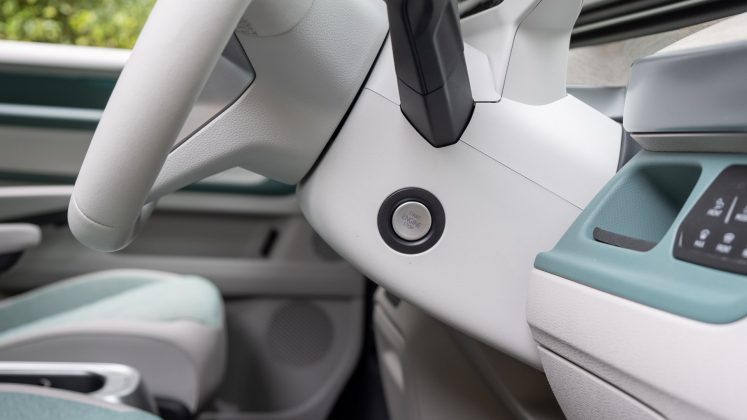
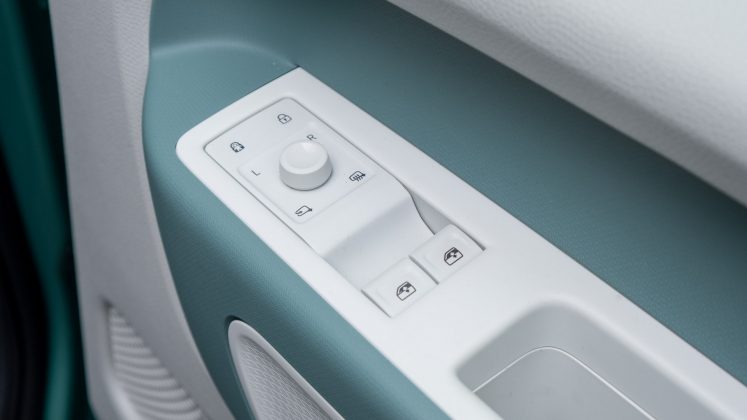
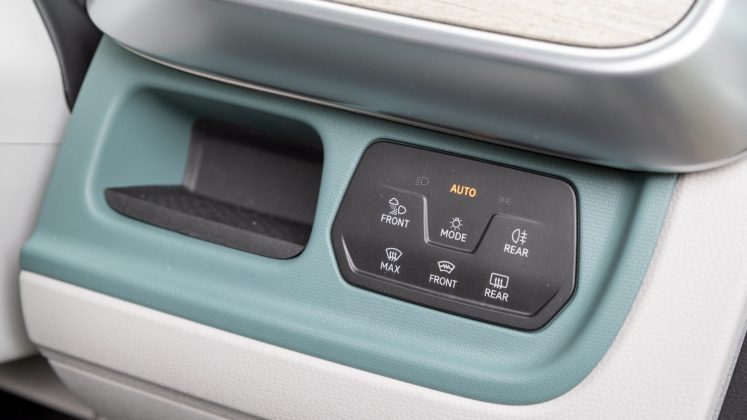
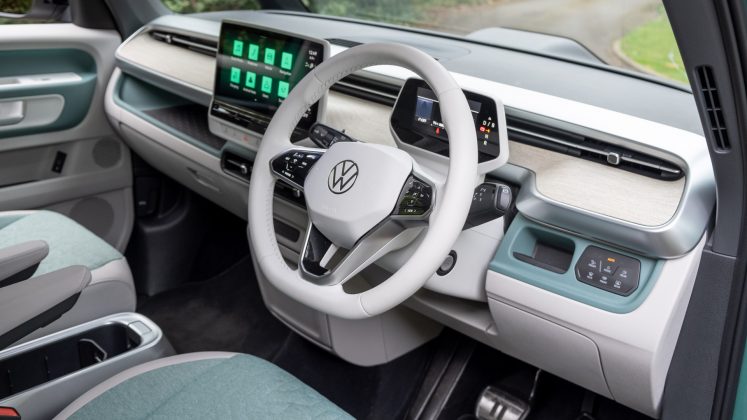
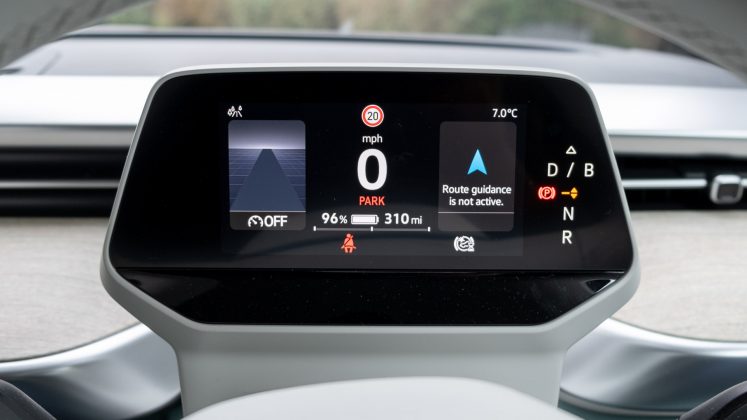
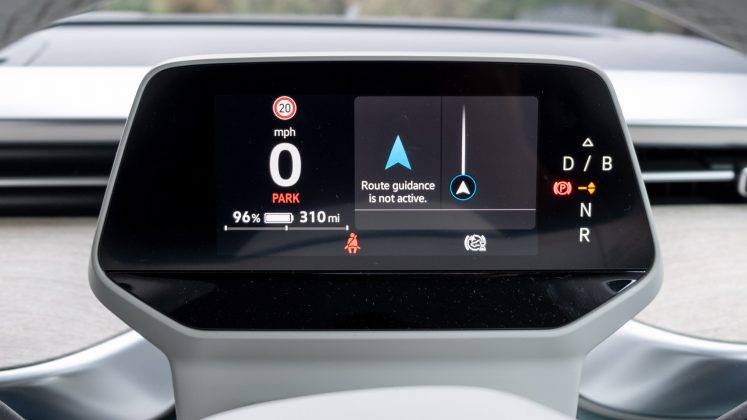
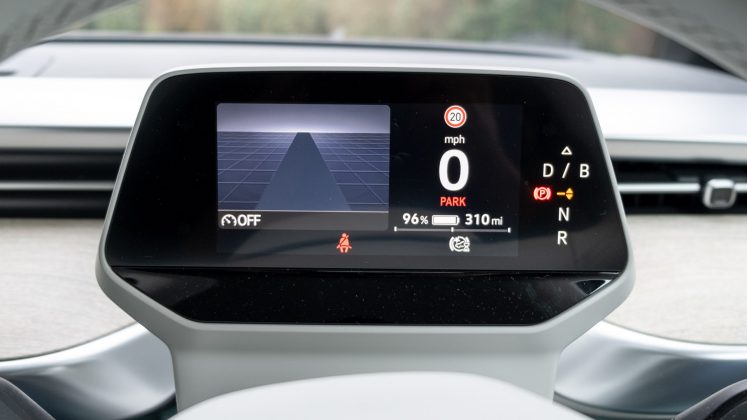
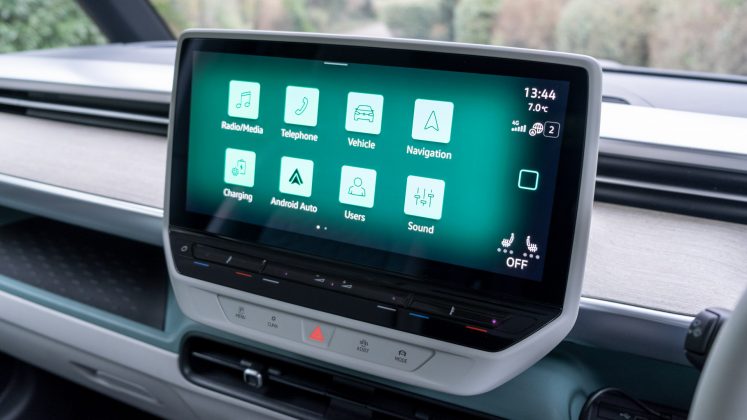
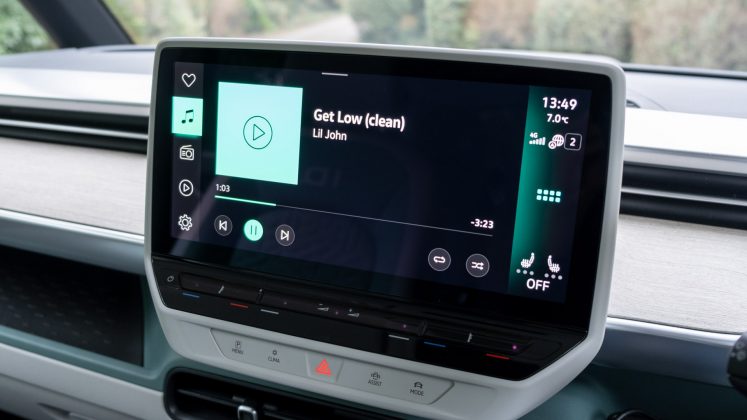
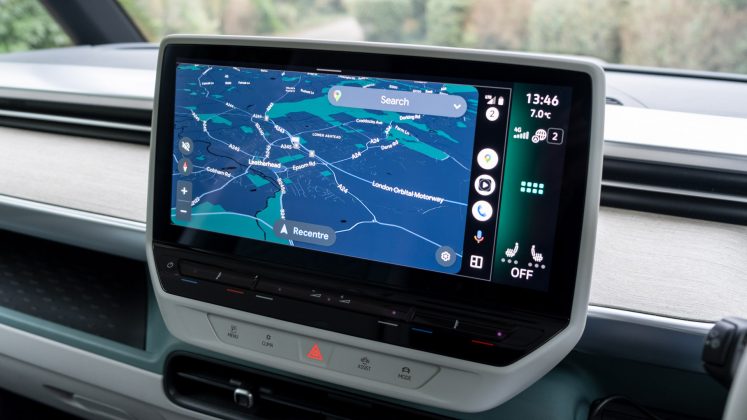
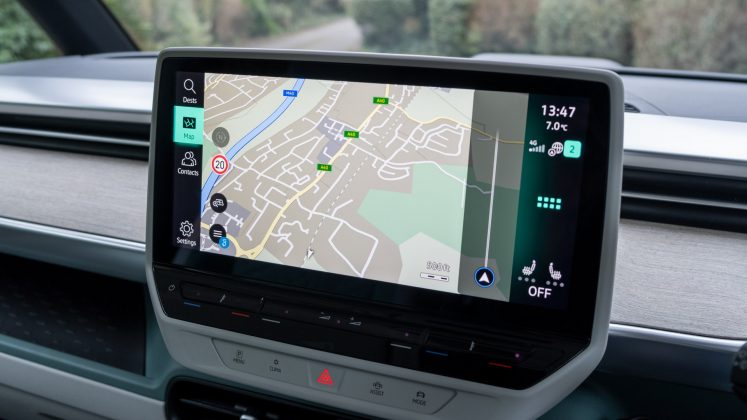
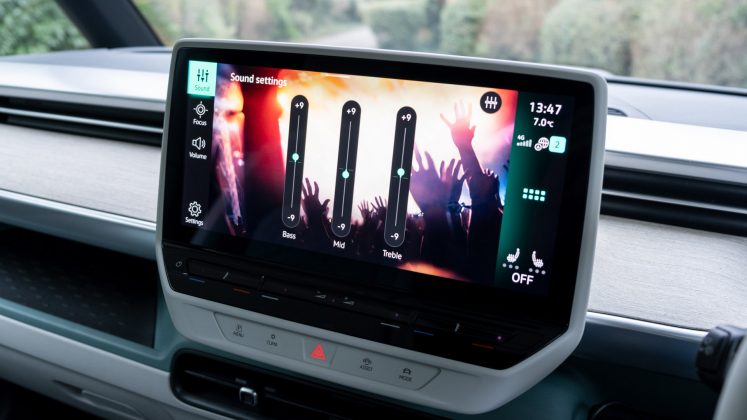
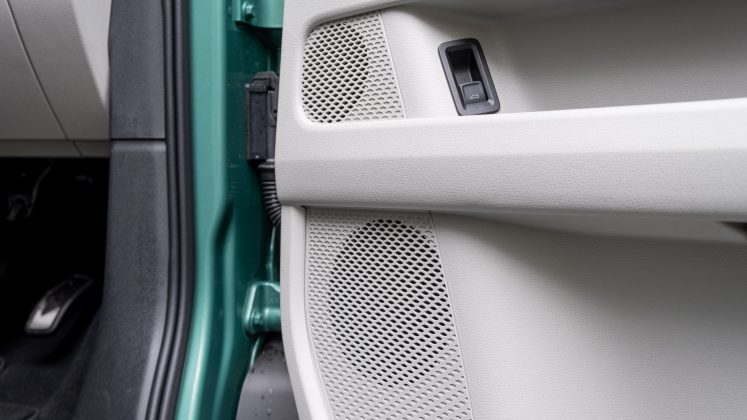
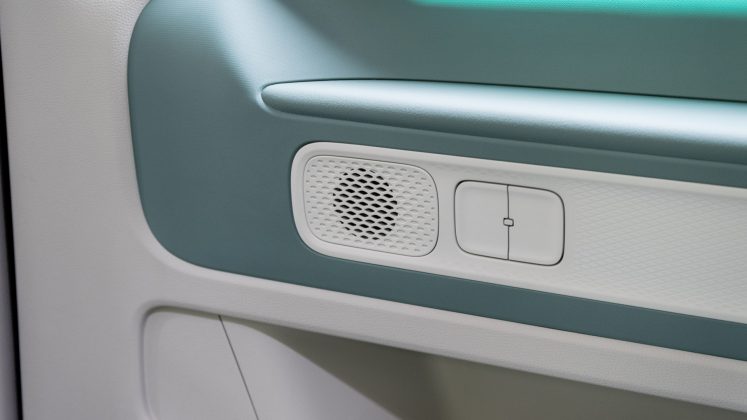
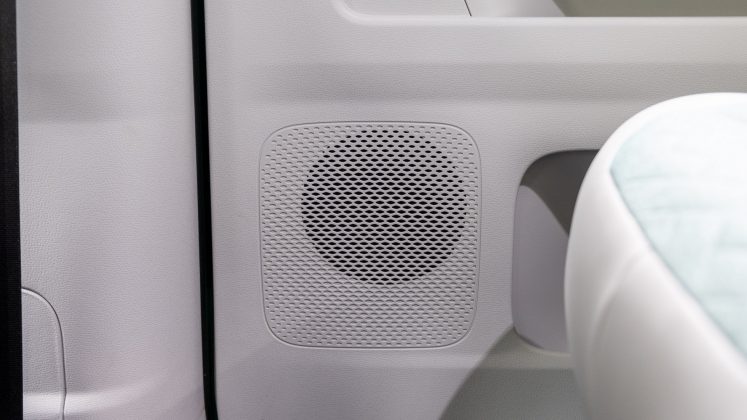
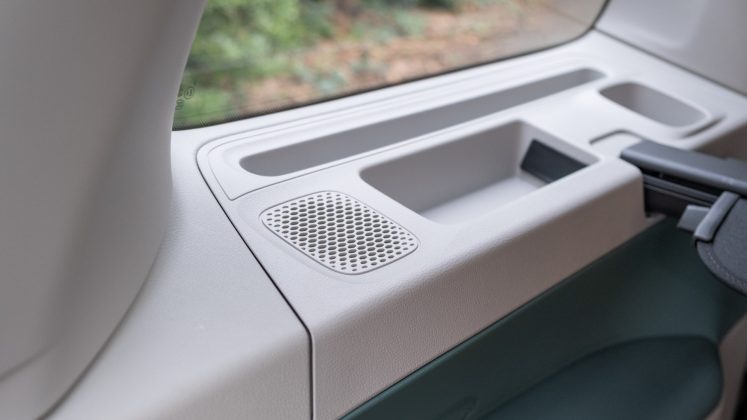
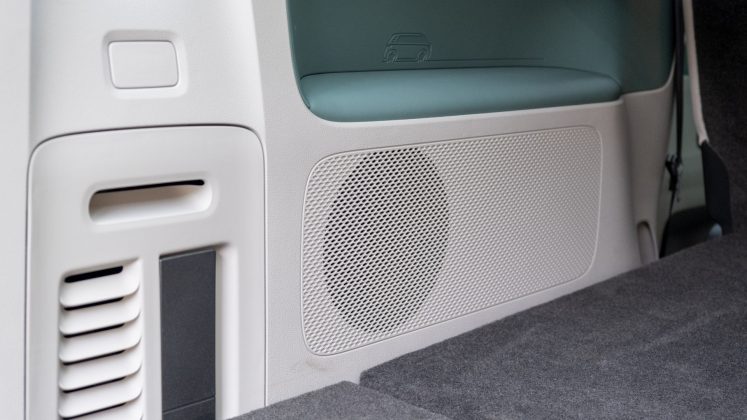
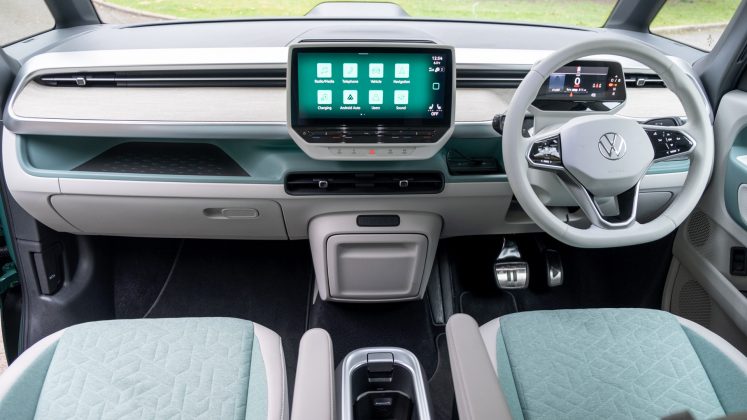
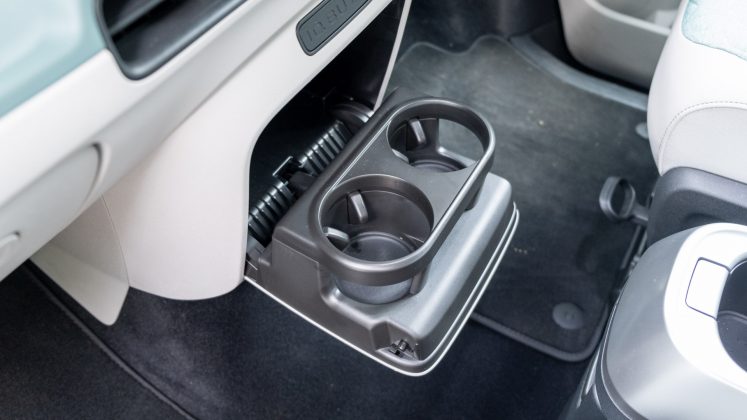
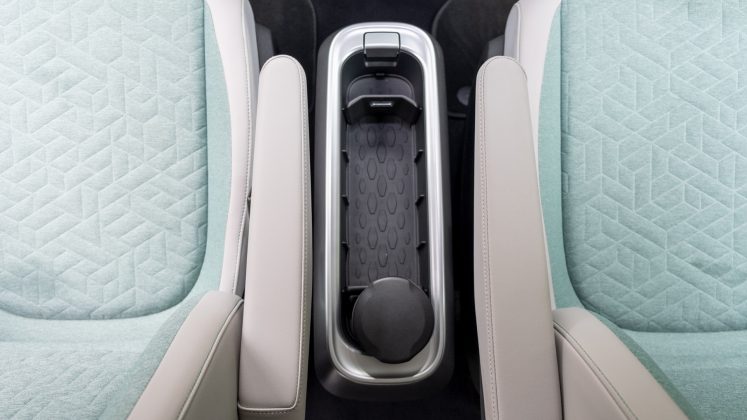
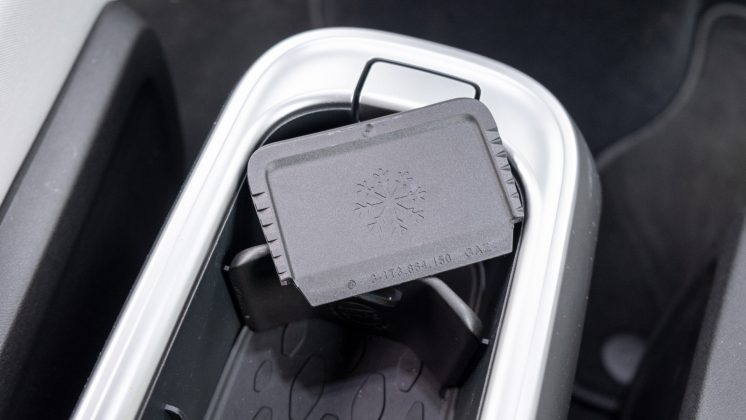
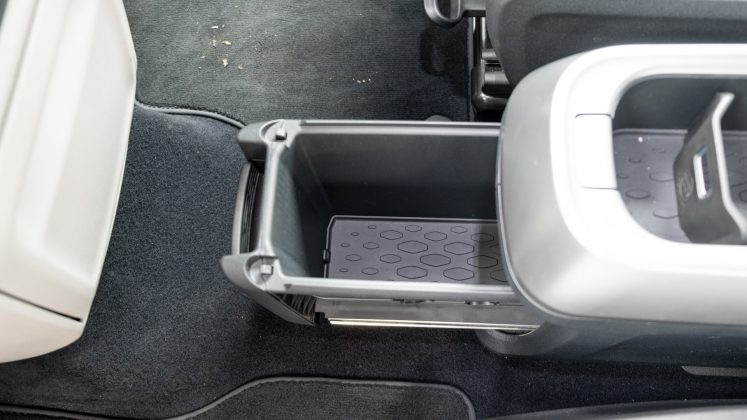
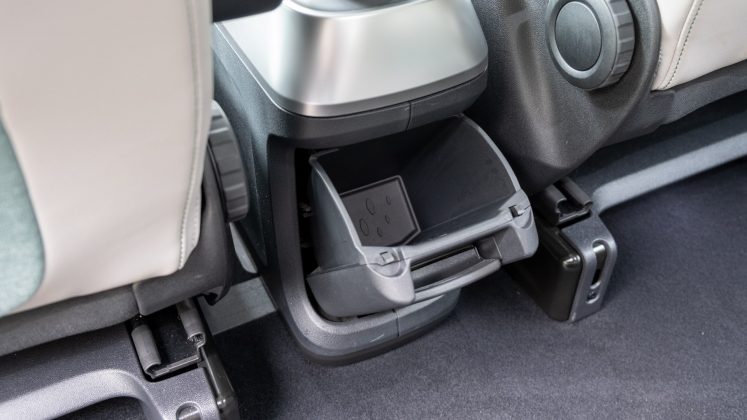
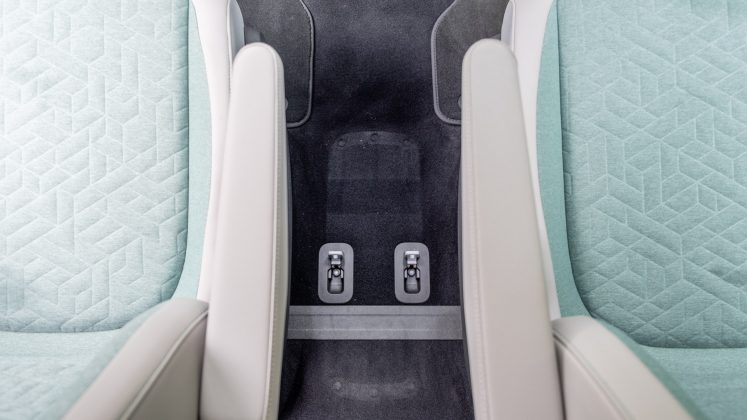
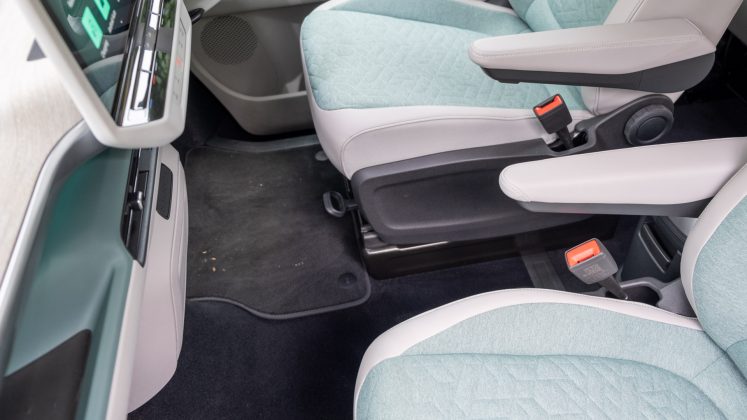
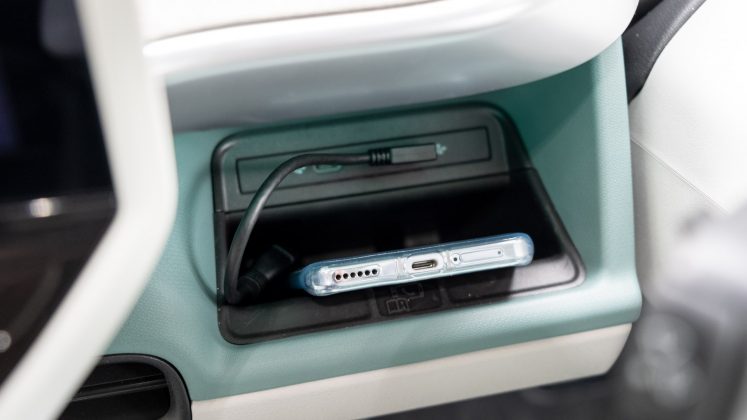
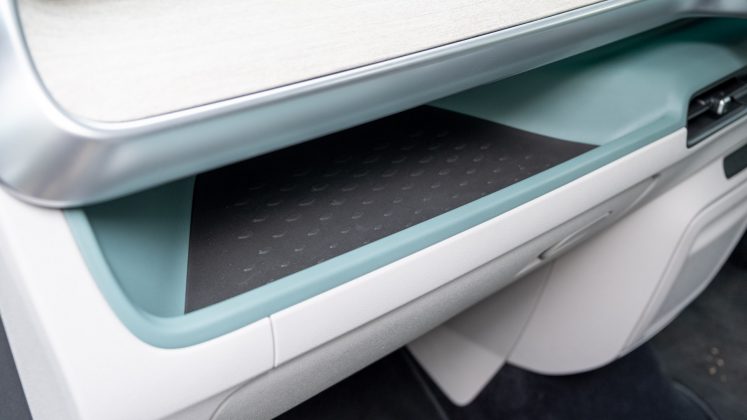
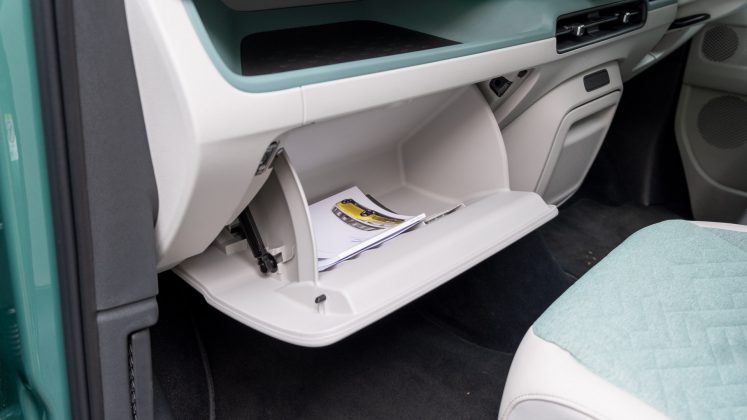
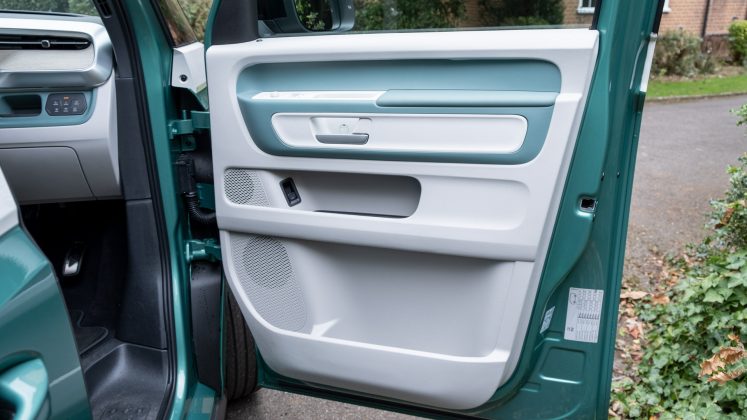
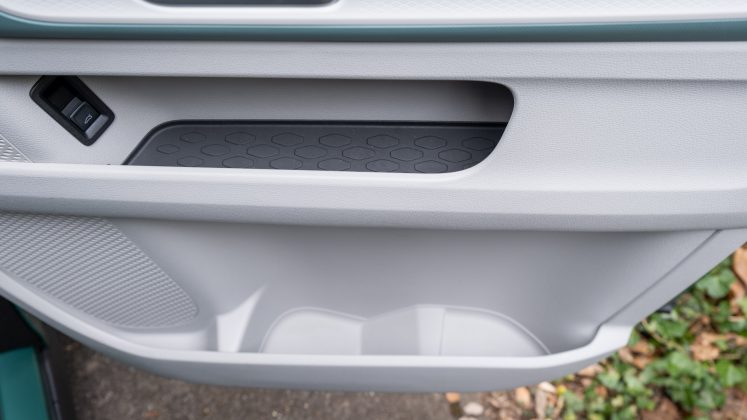
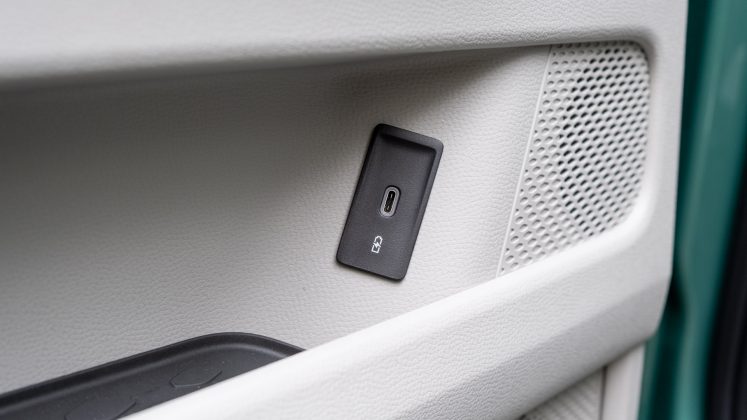
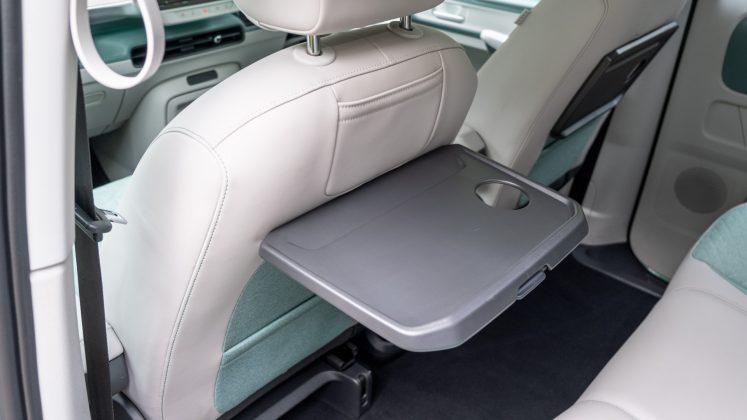
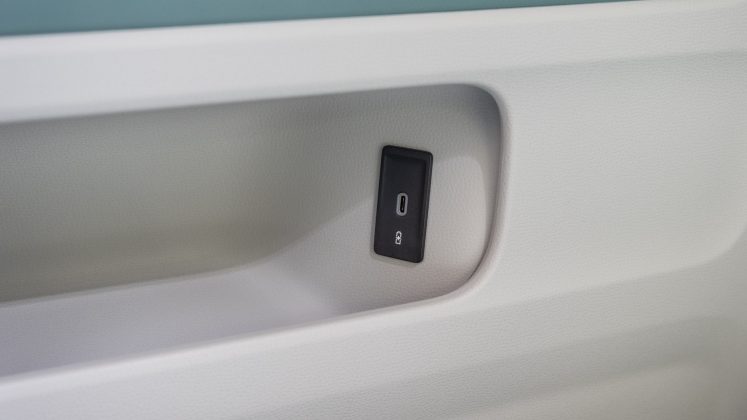
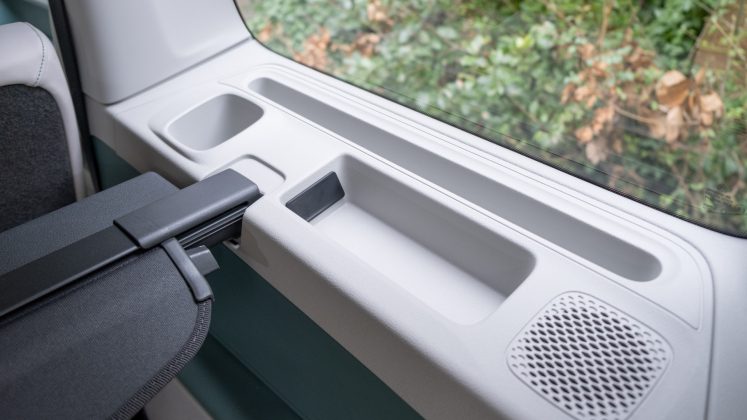
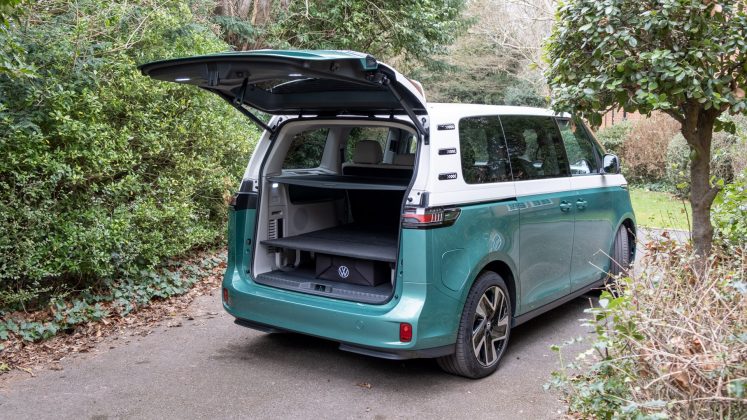
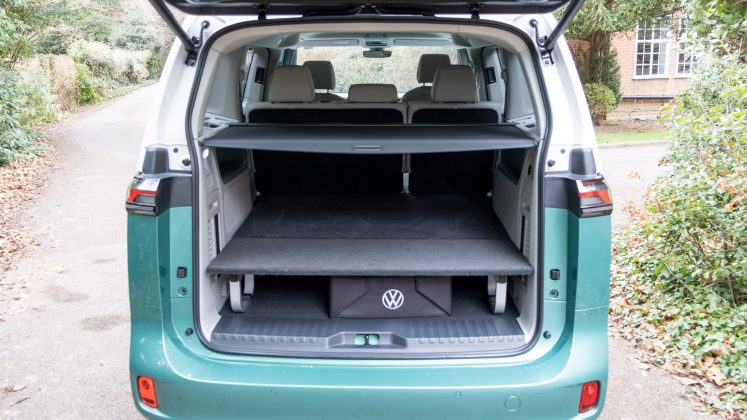
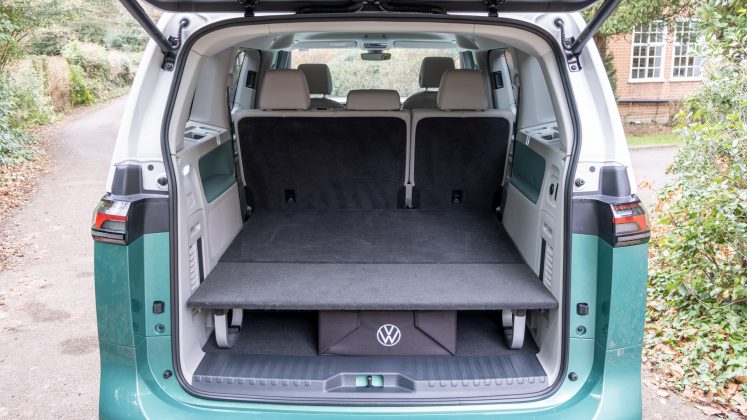
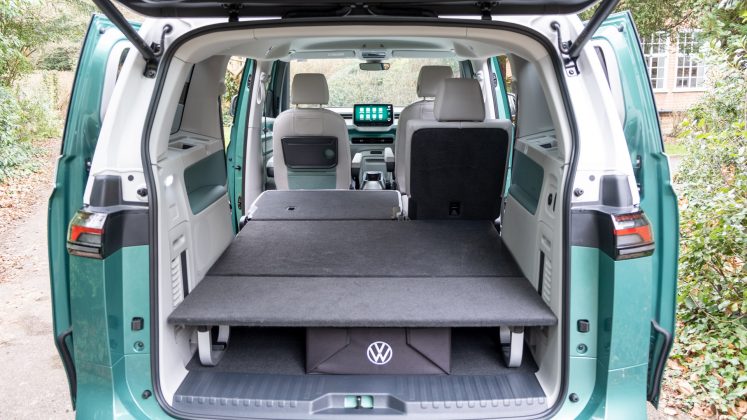
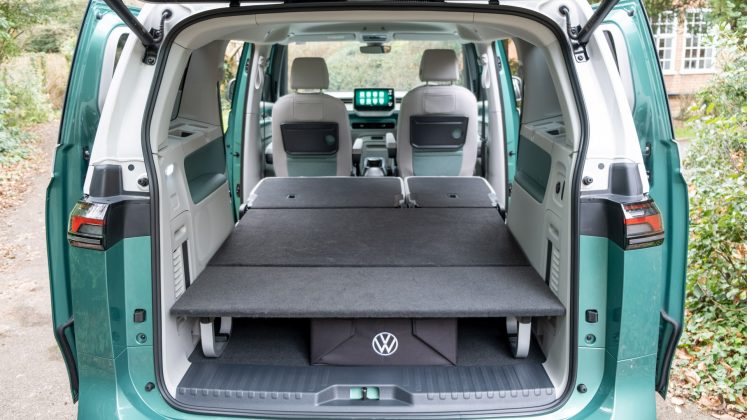
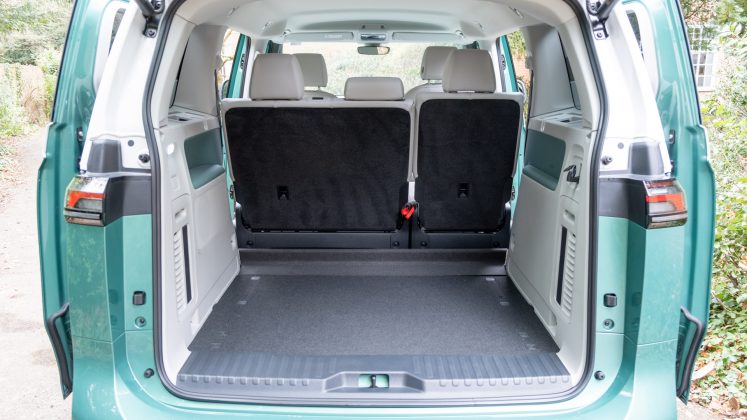
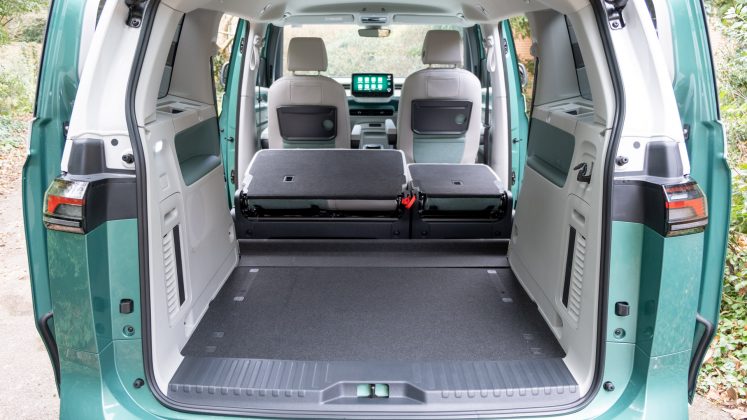
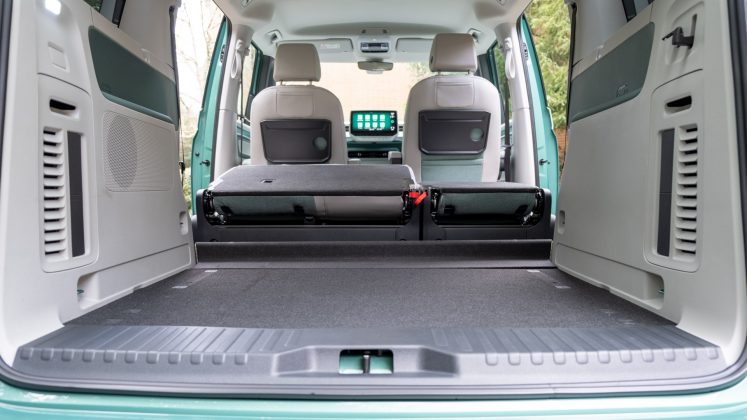
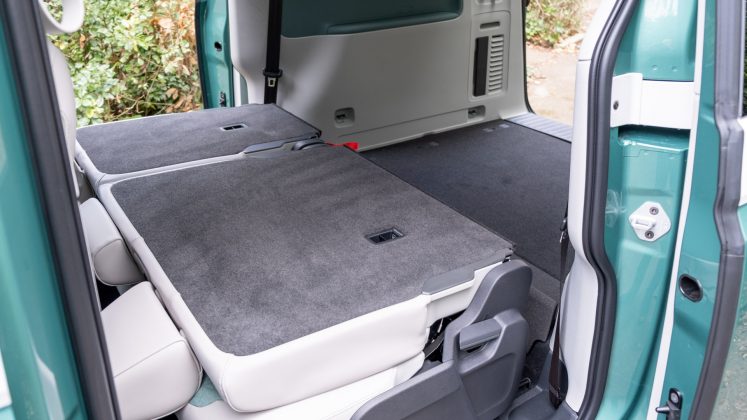
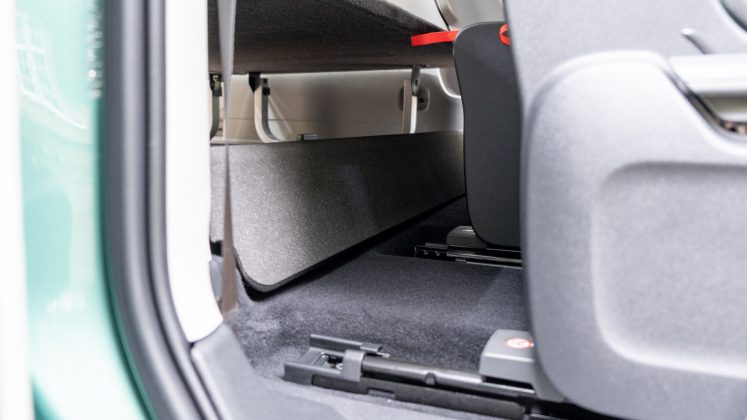
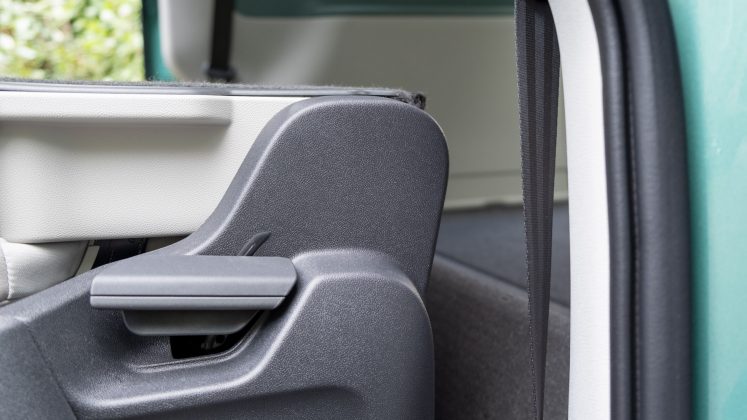
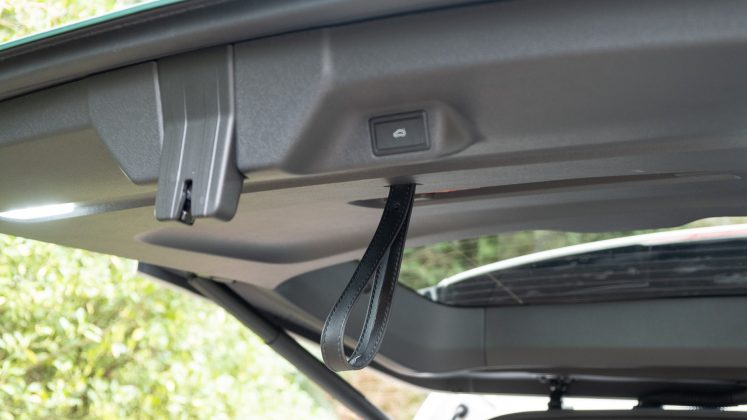
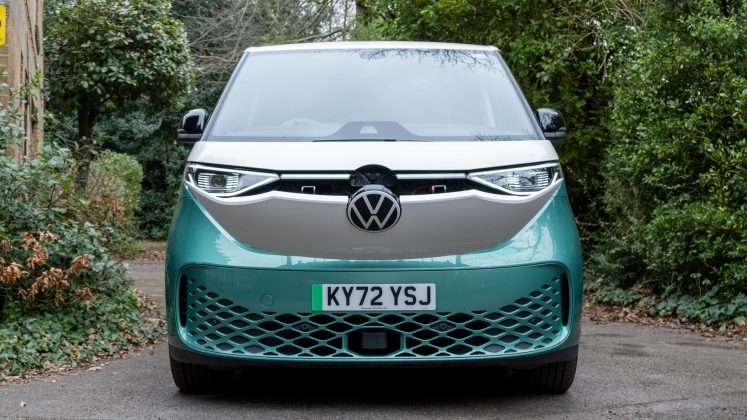
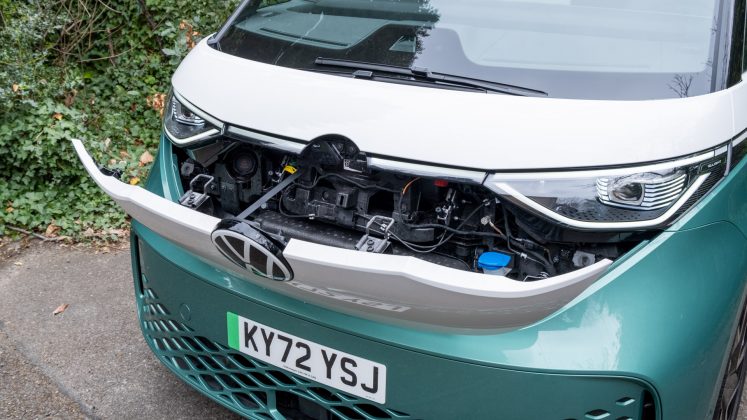
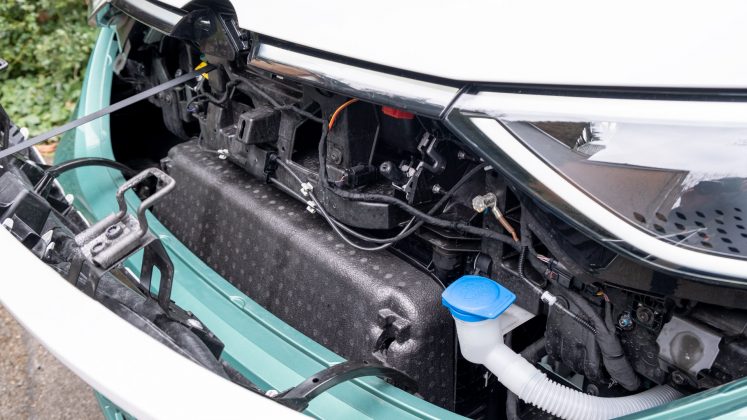
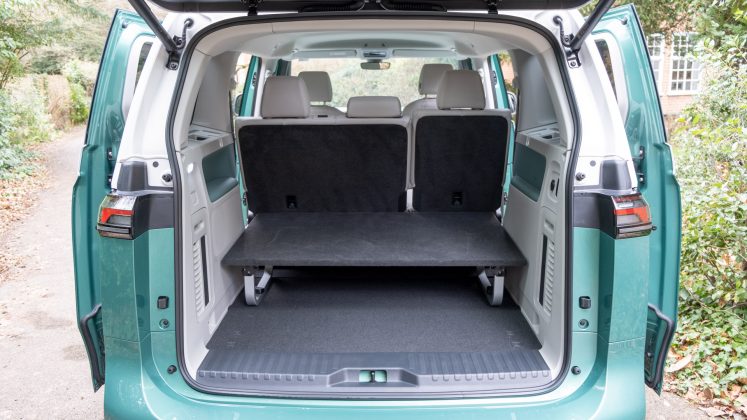
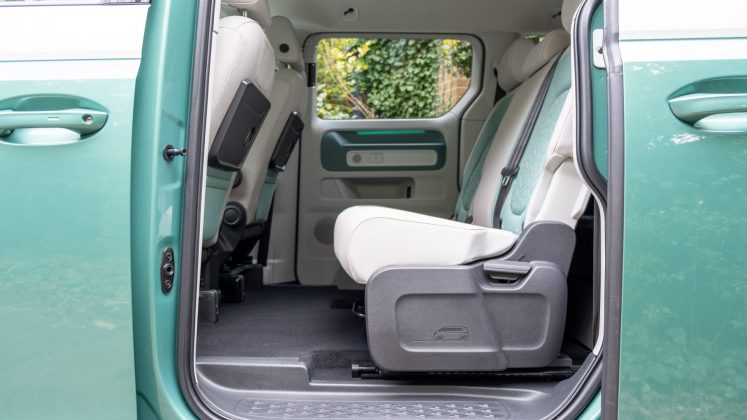
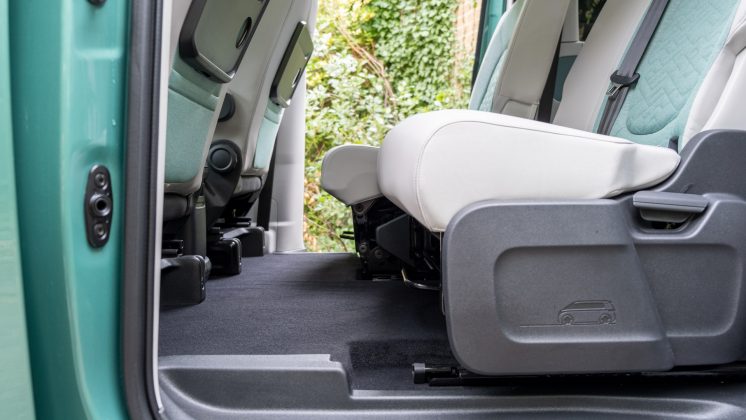
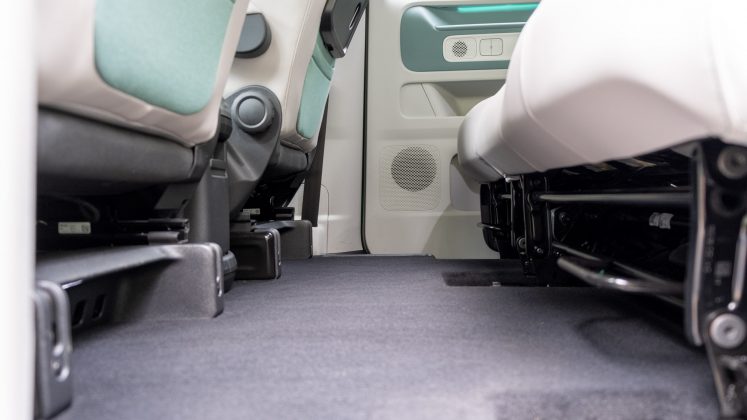
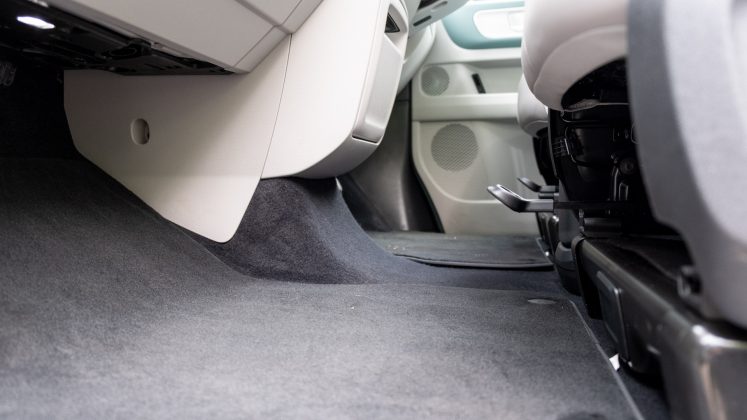
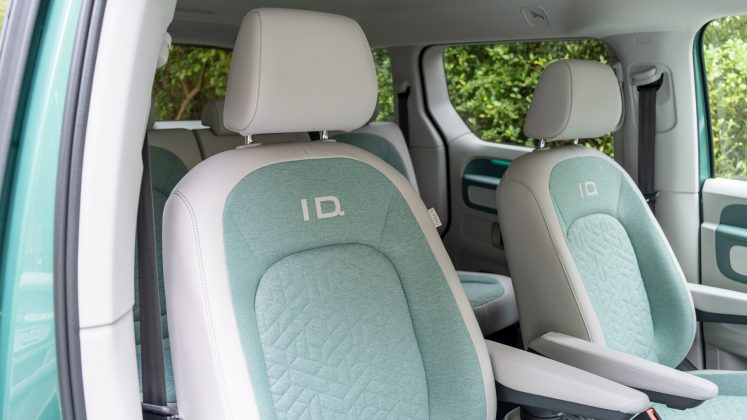
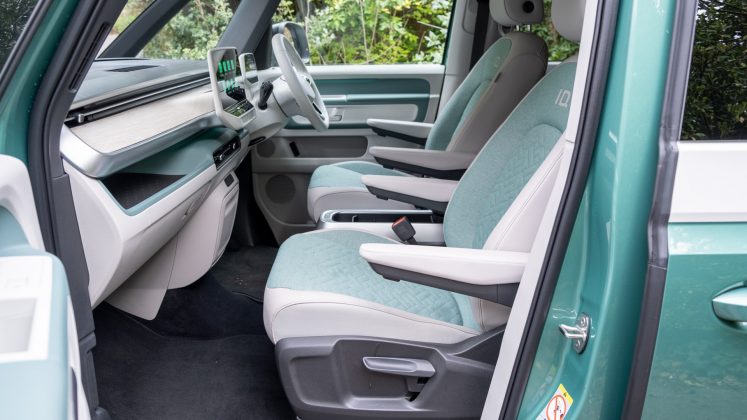
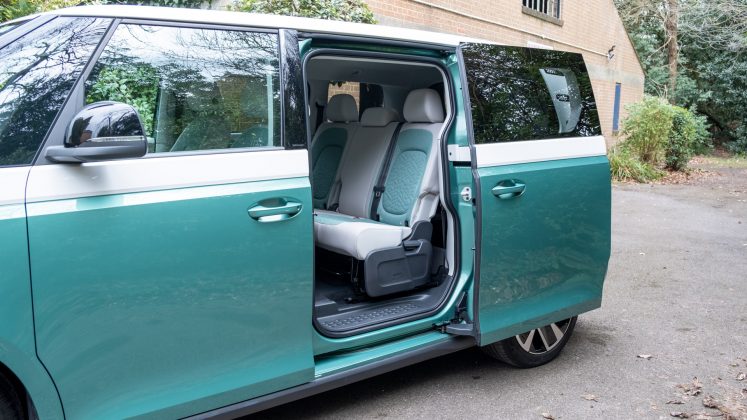
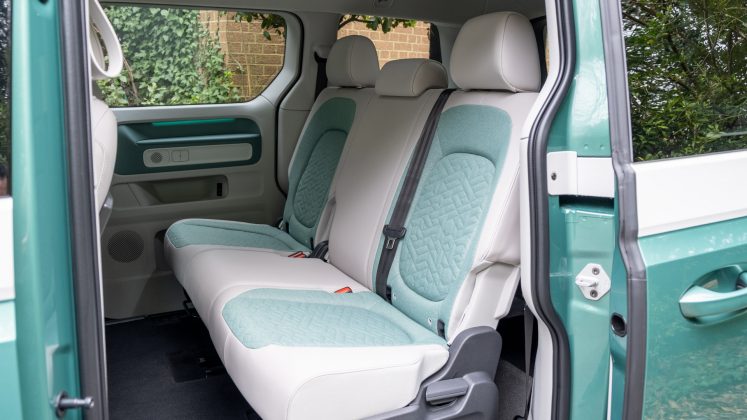
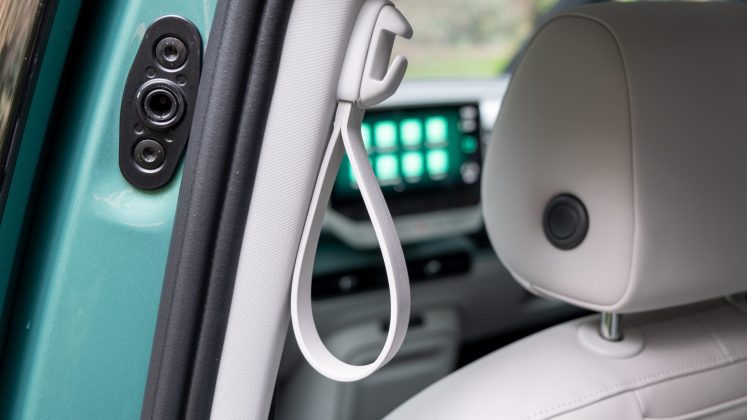
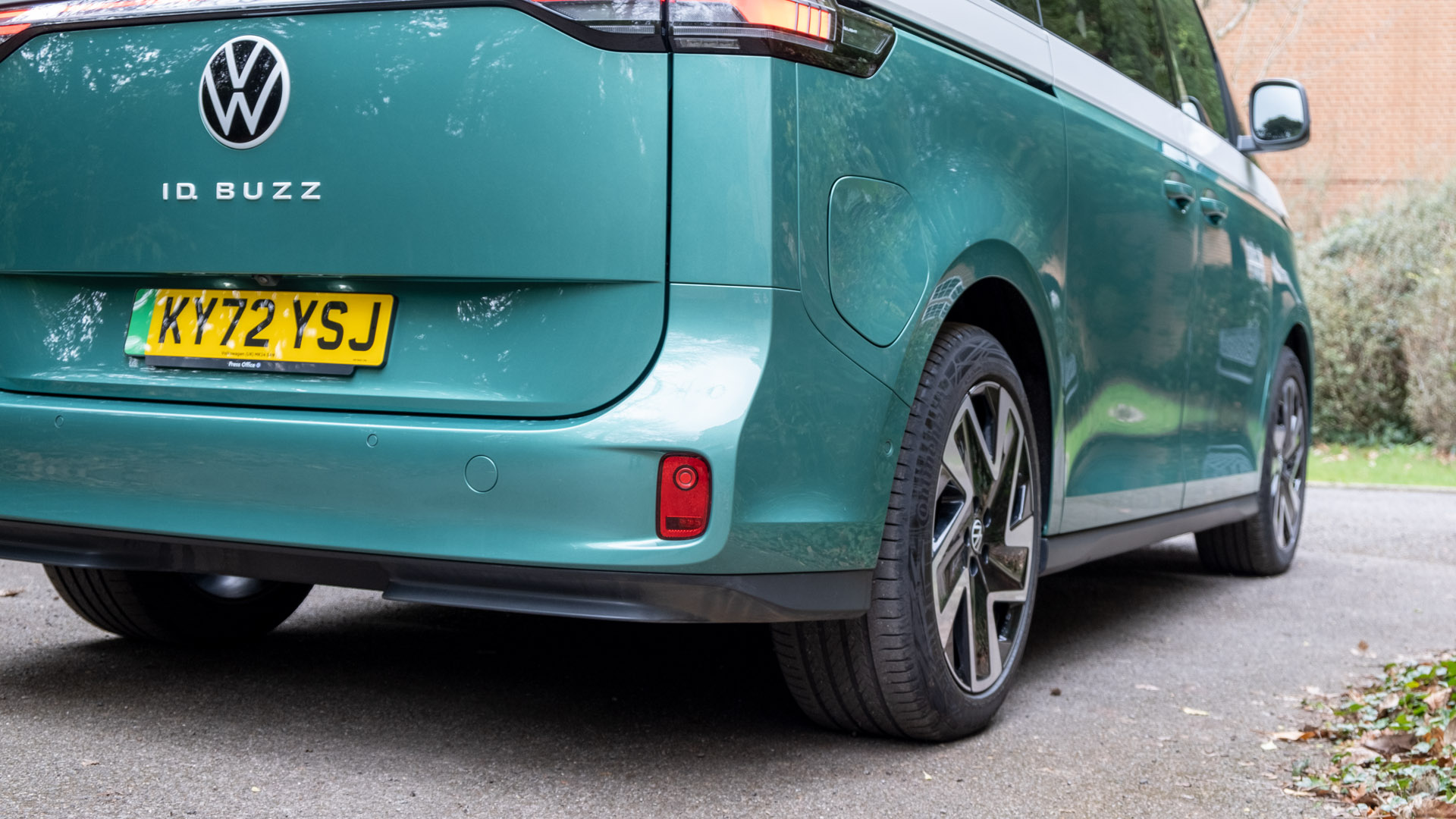
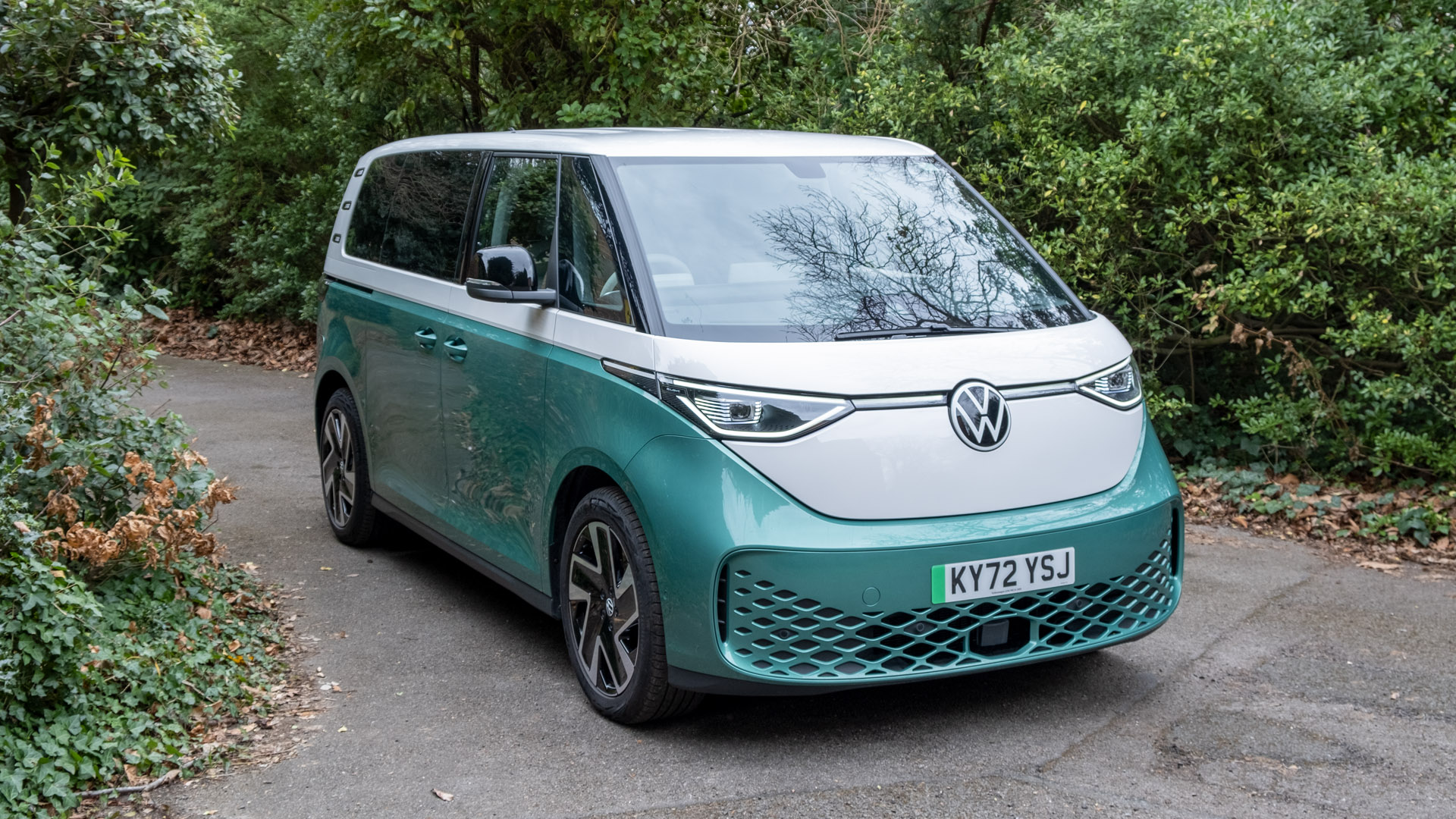
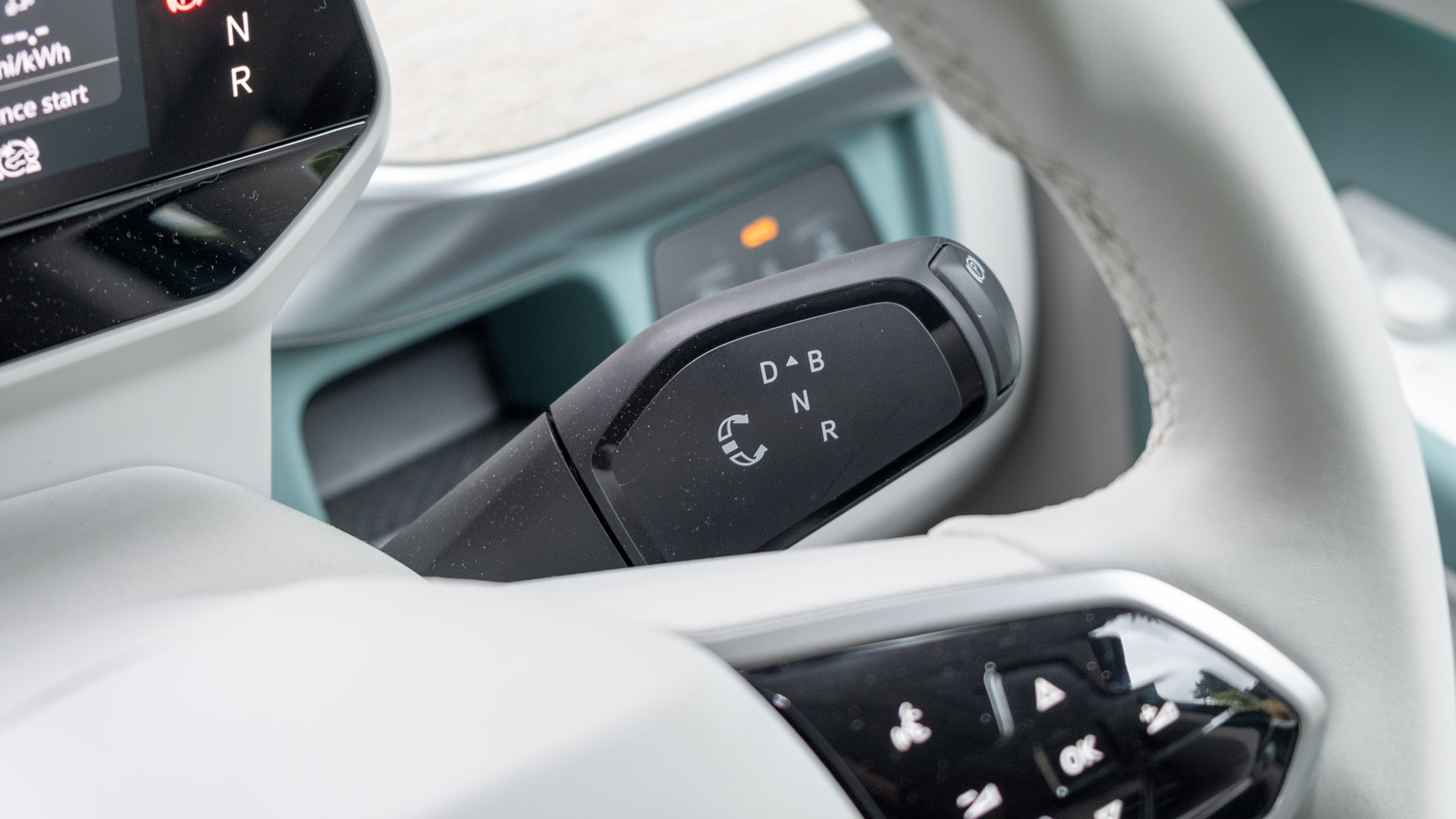
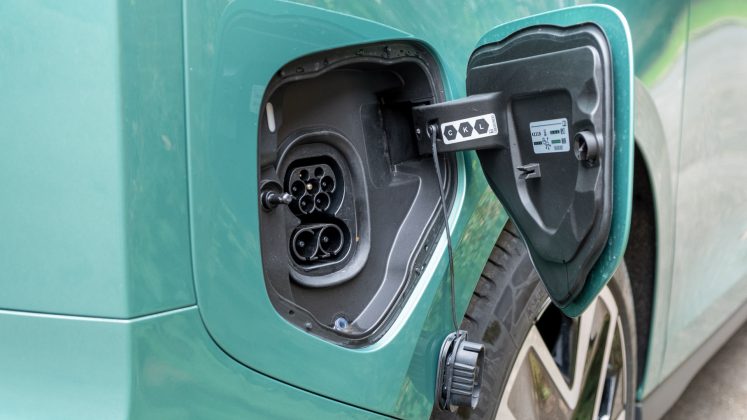
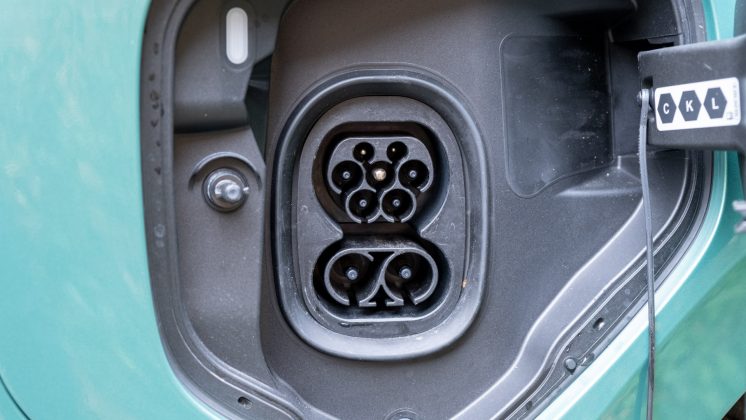
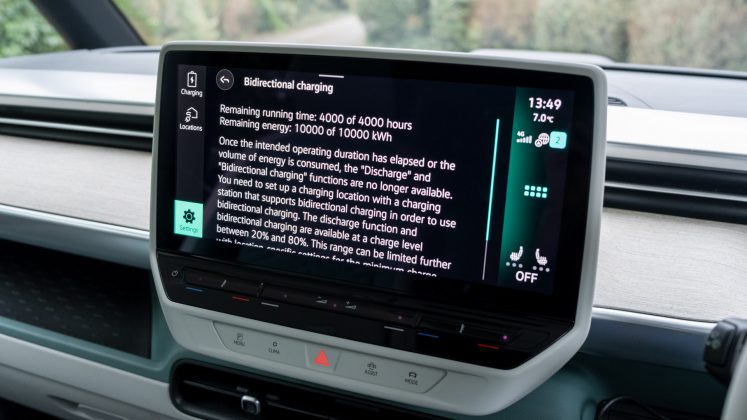
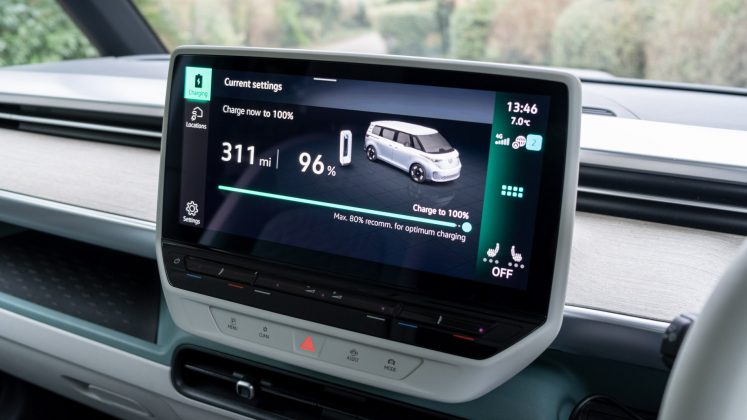
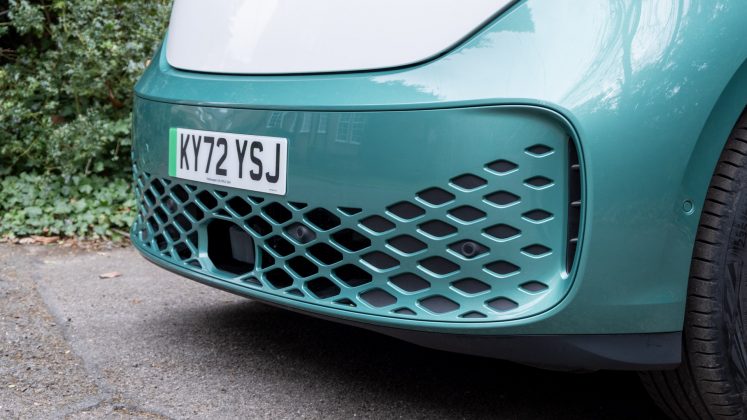
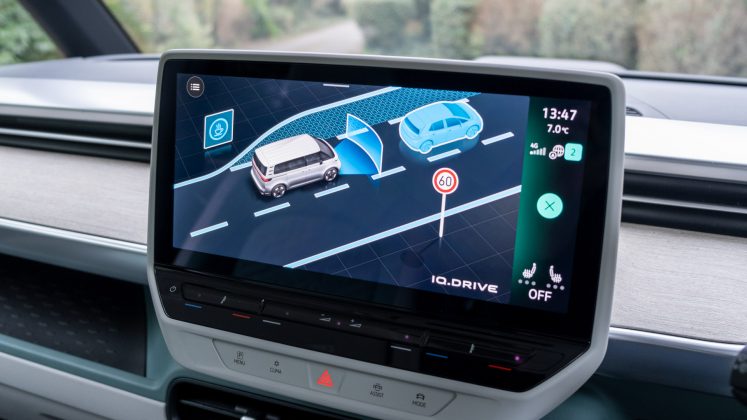
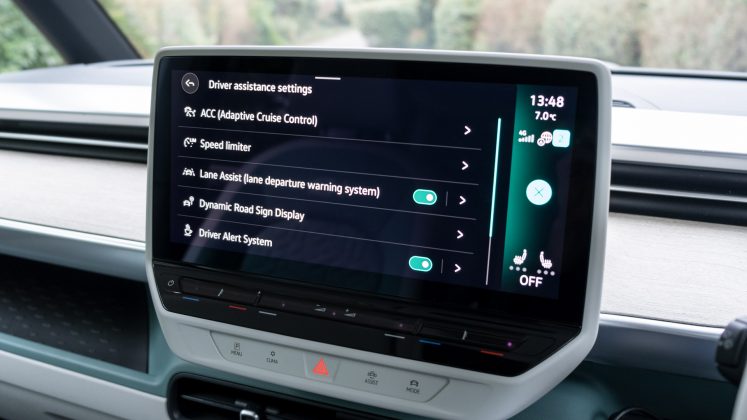
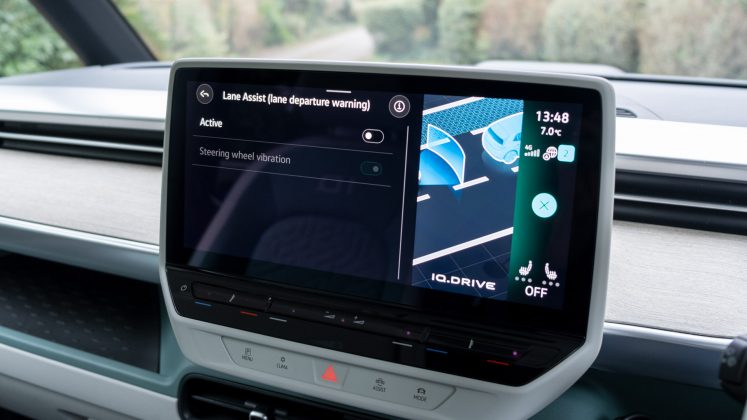
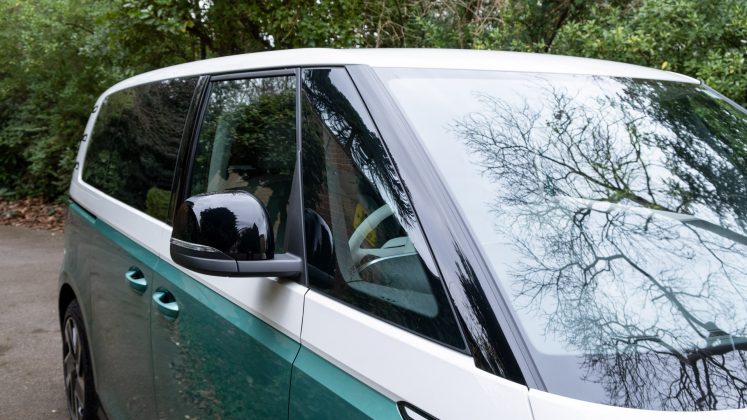
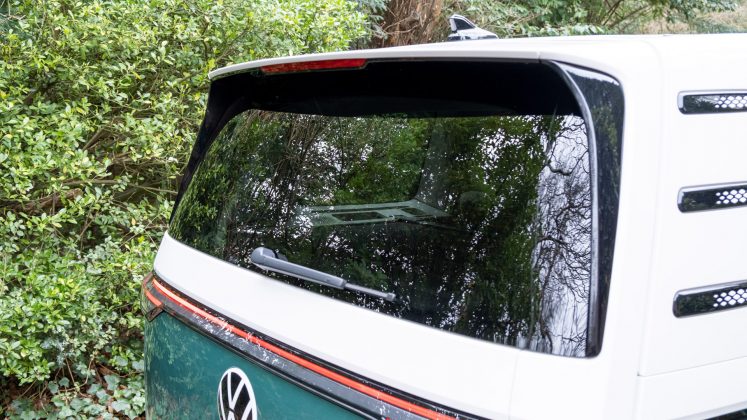
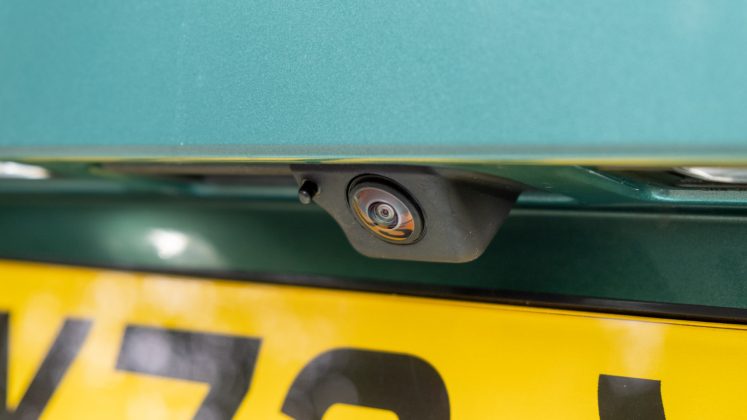
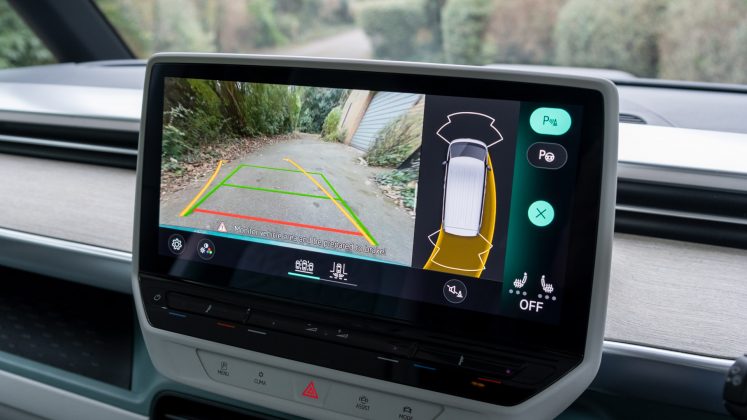
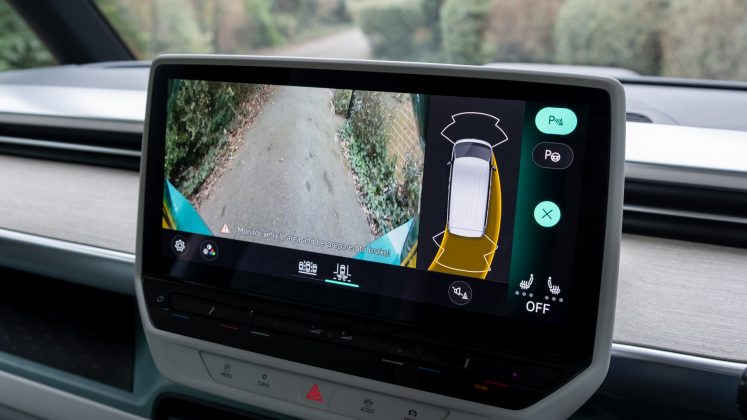
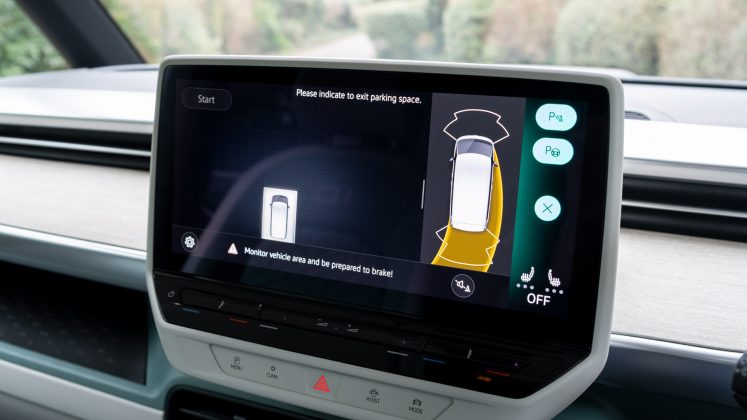
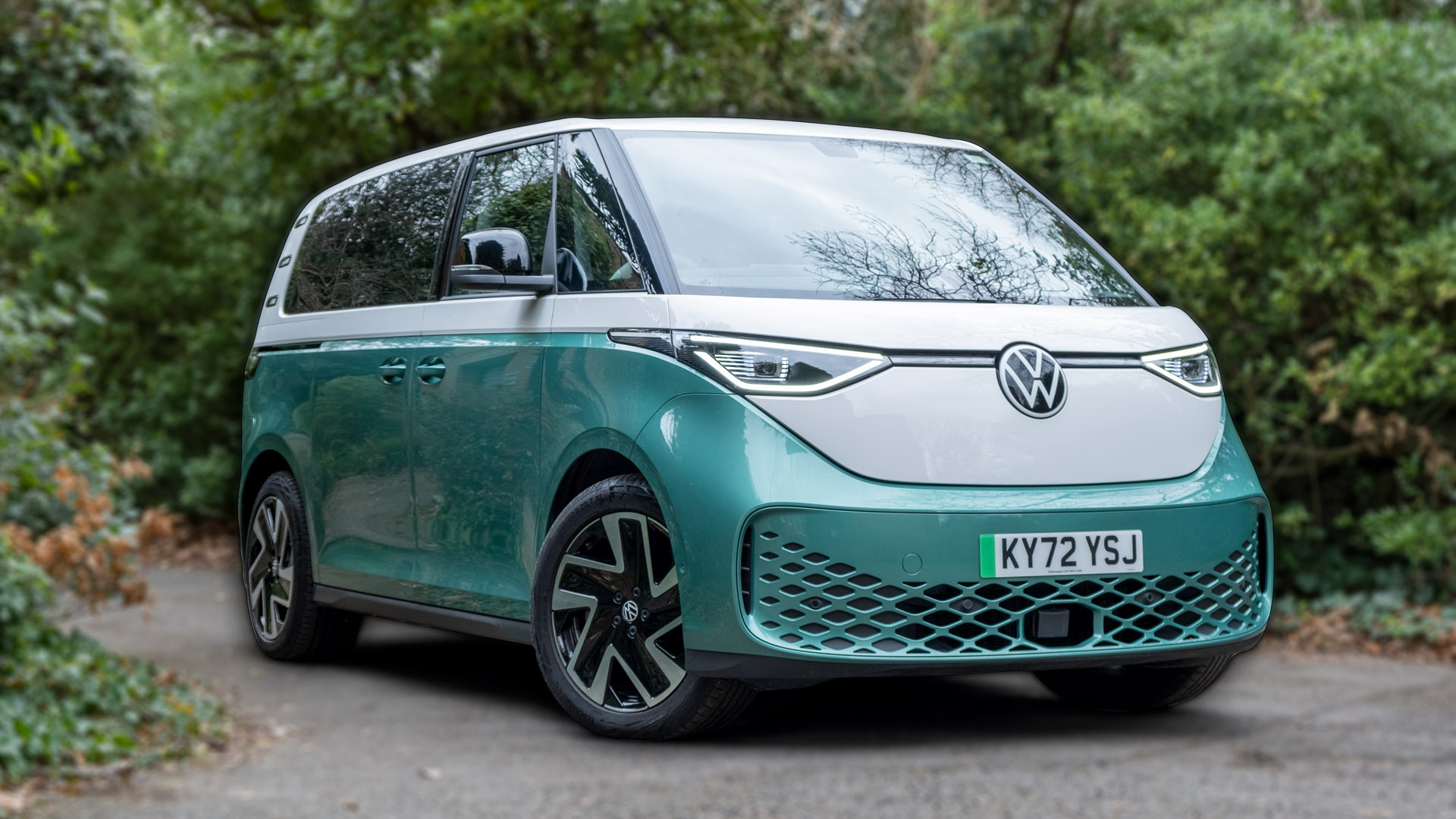




Saw one, went to show room looked around it then road tested one loved it and am picking up new one tomorrow
Glad you liked it, thanks for sharing!